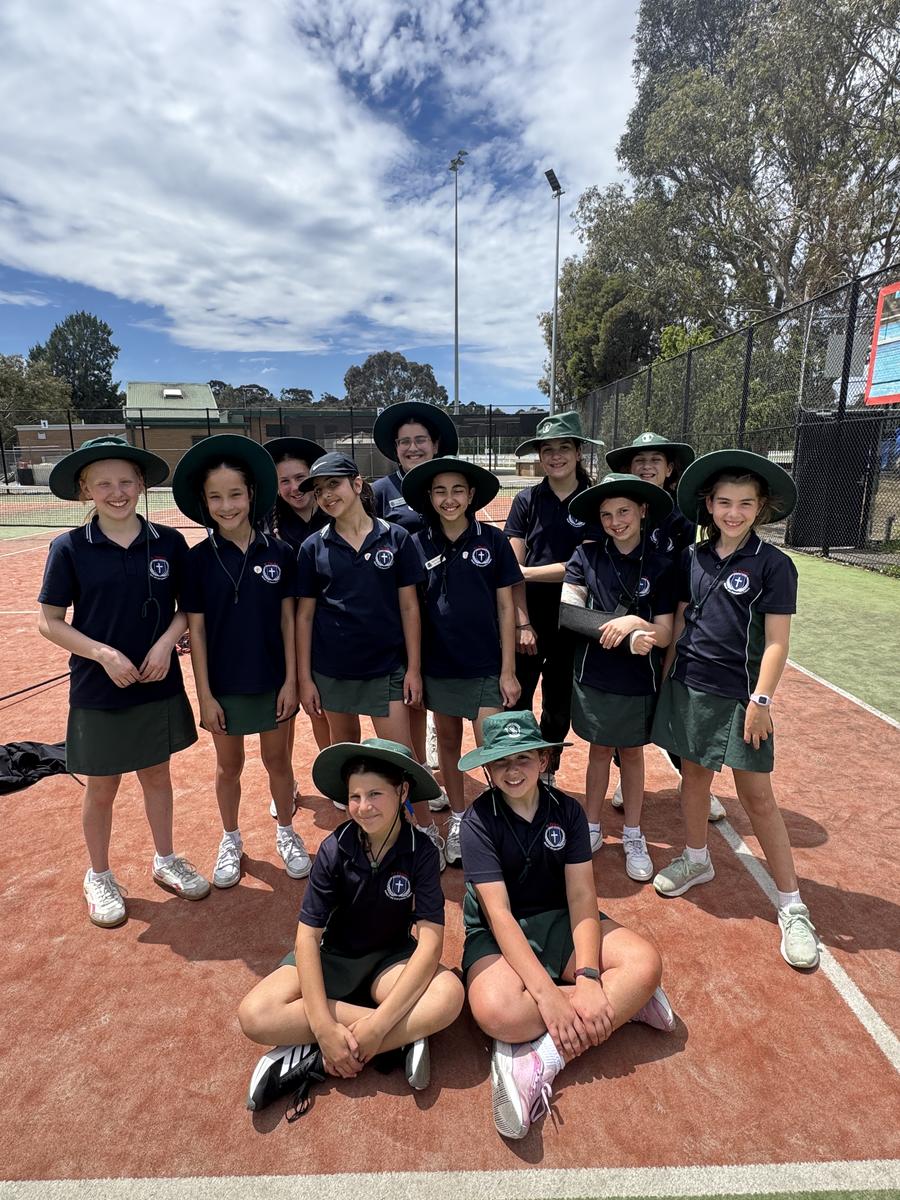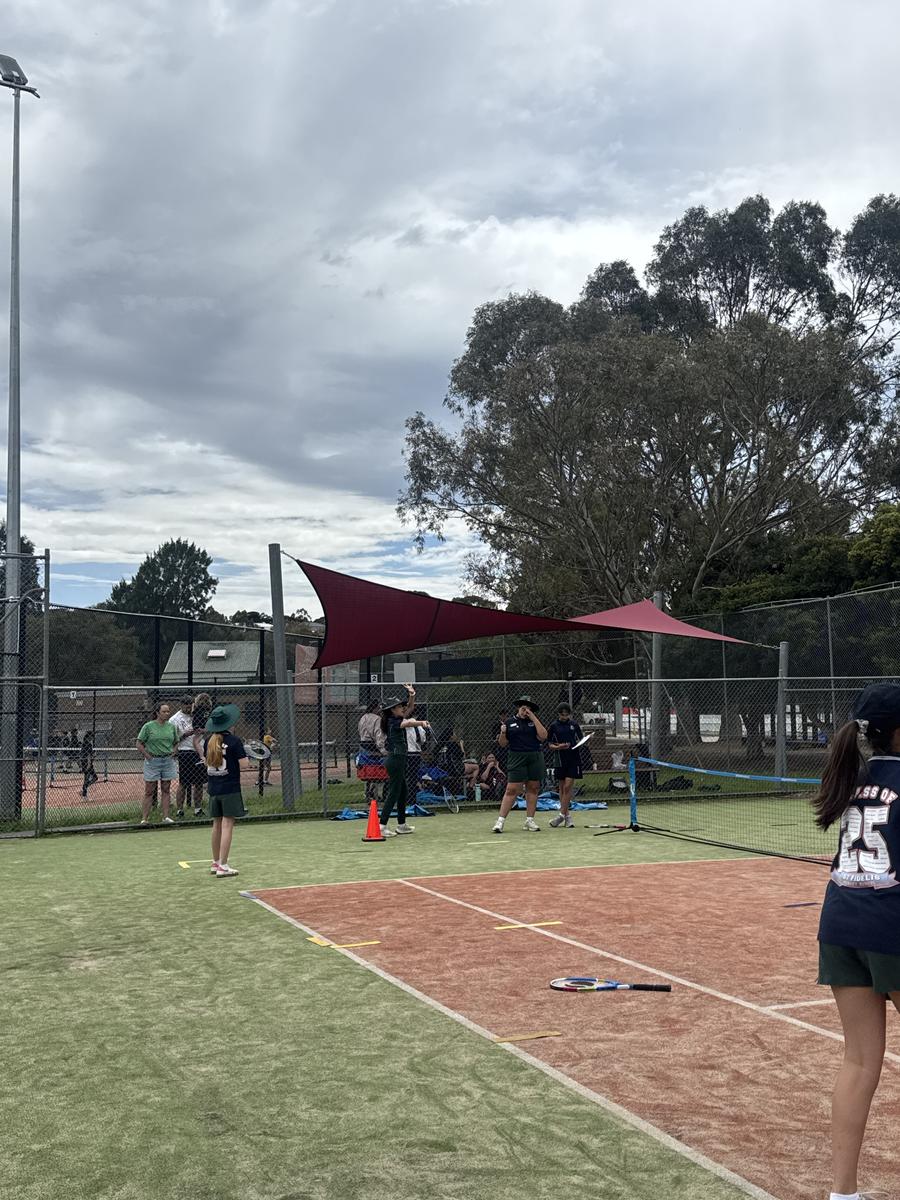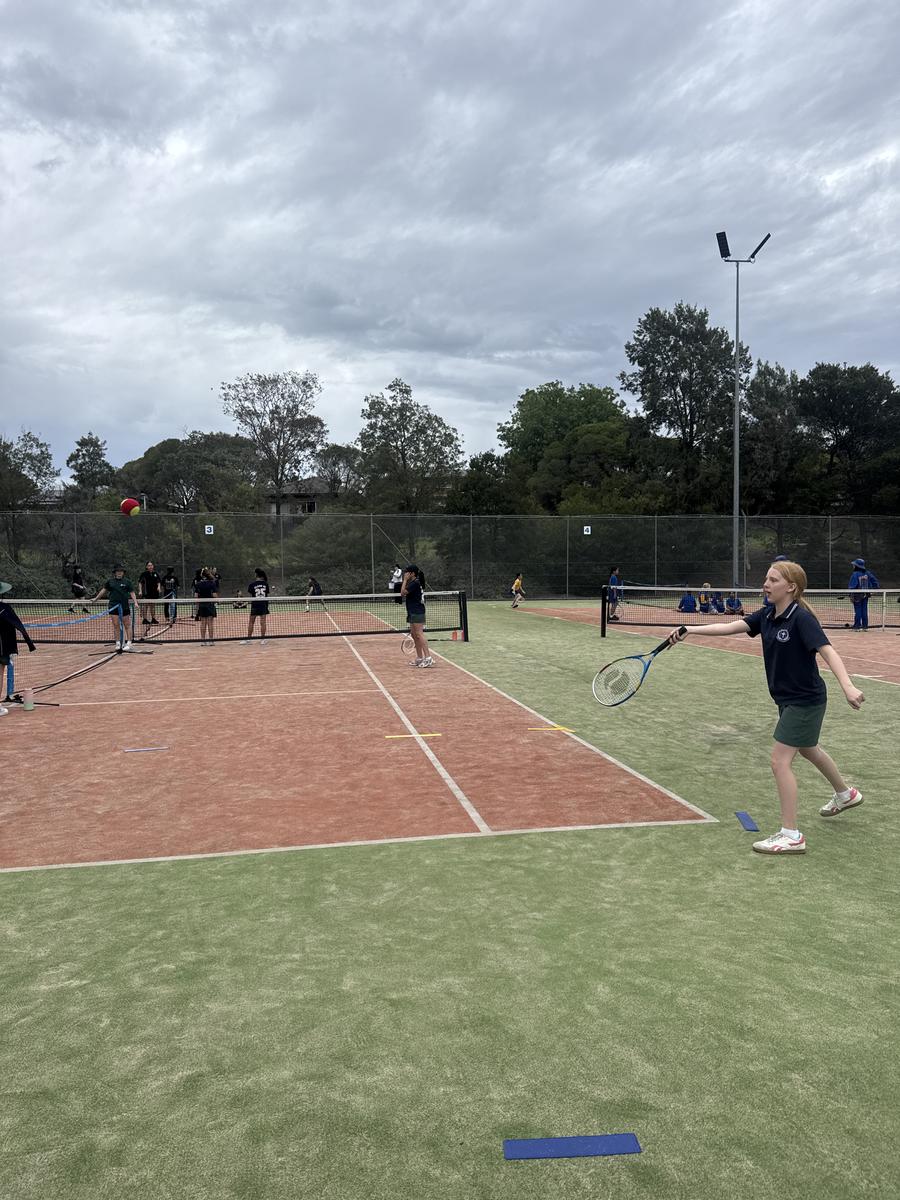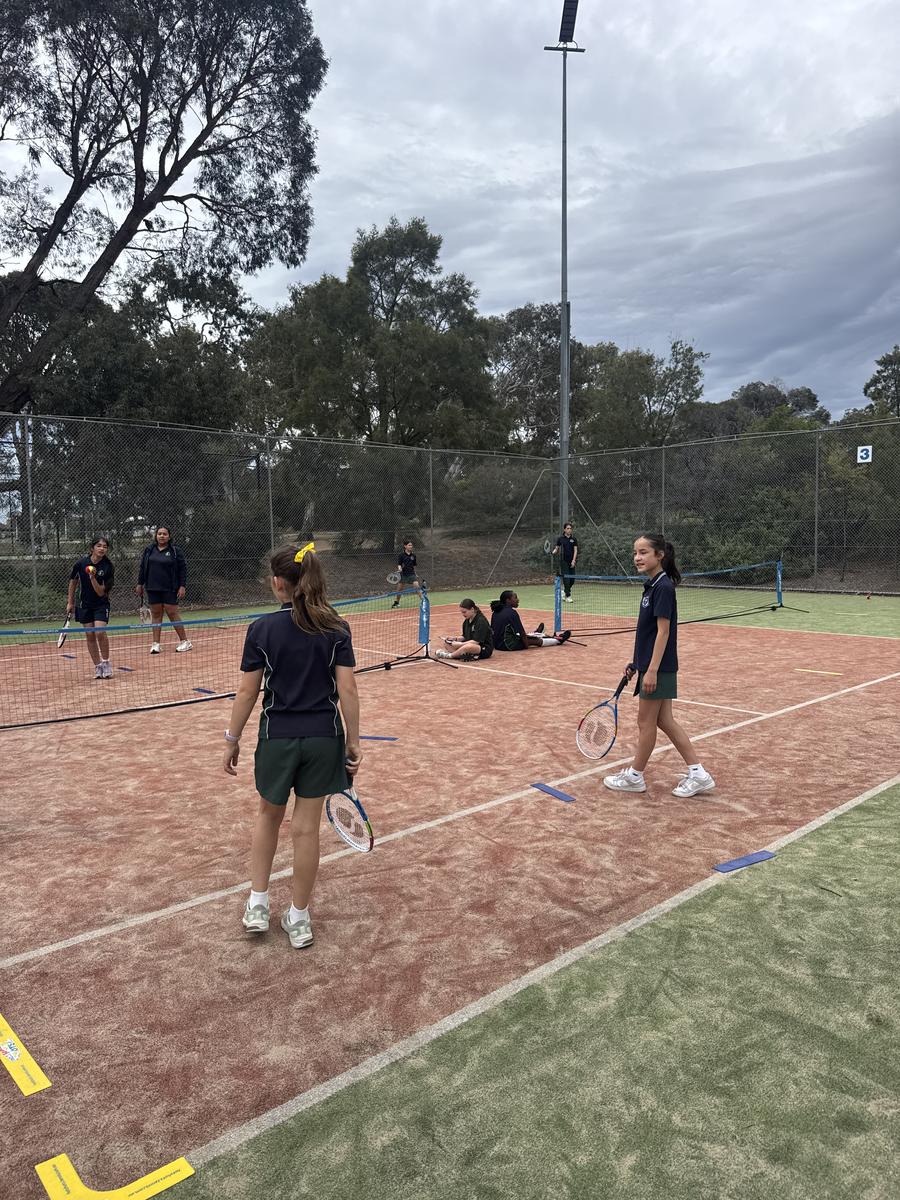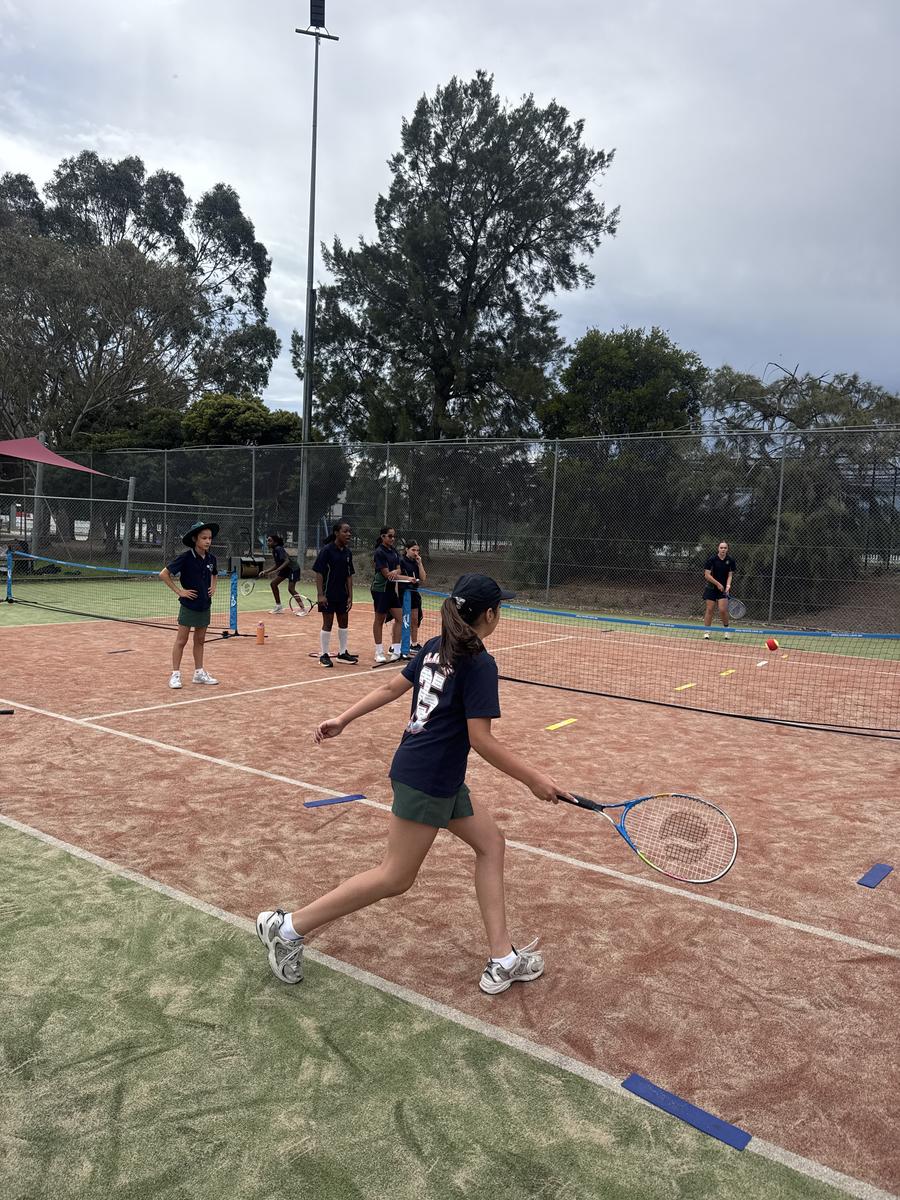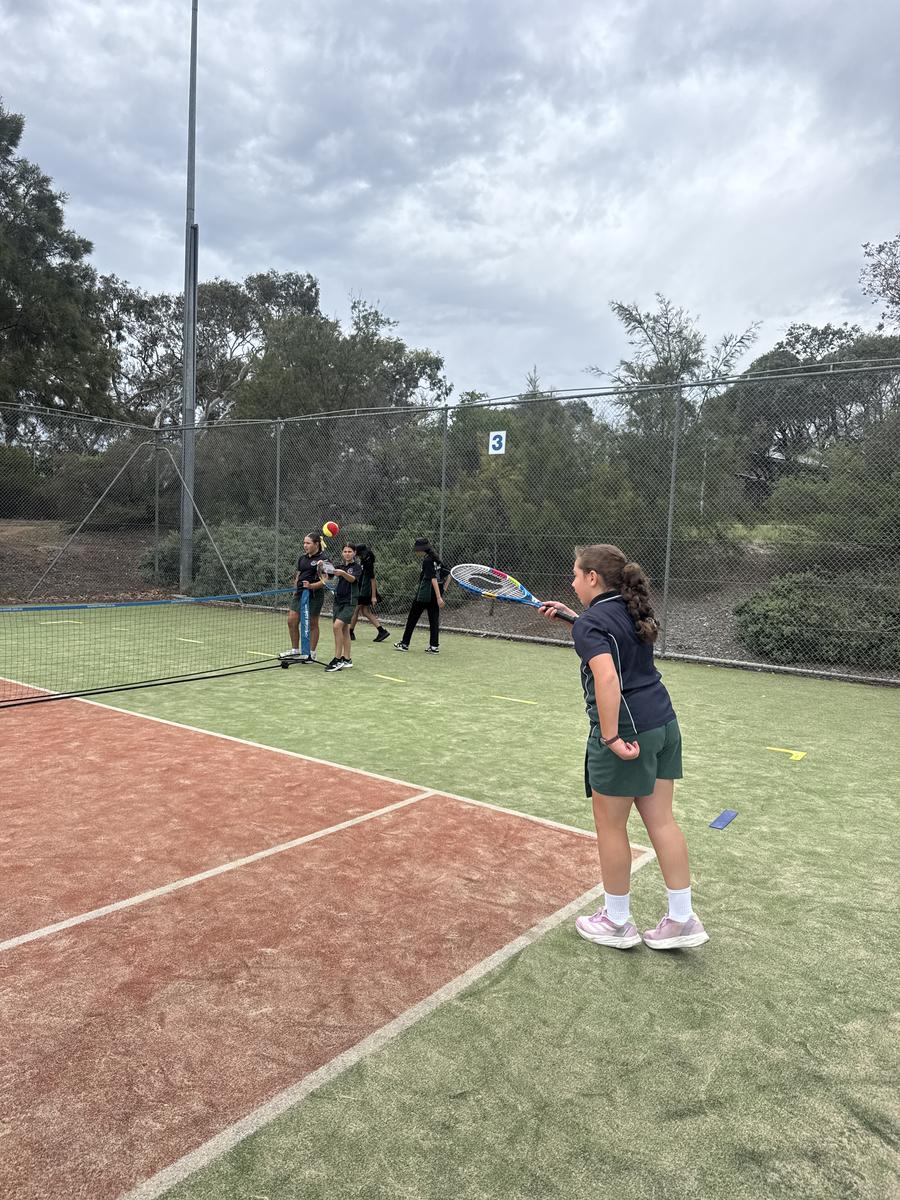Learning & Teaching
Learning and Teaching encompasses the following areas: Student Outcomes, Curriculum, Assessment, Reporting, Principles and Pedagogy.
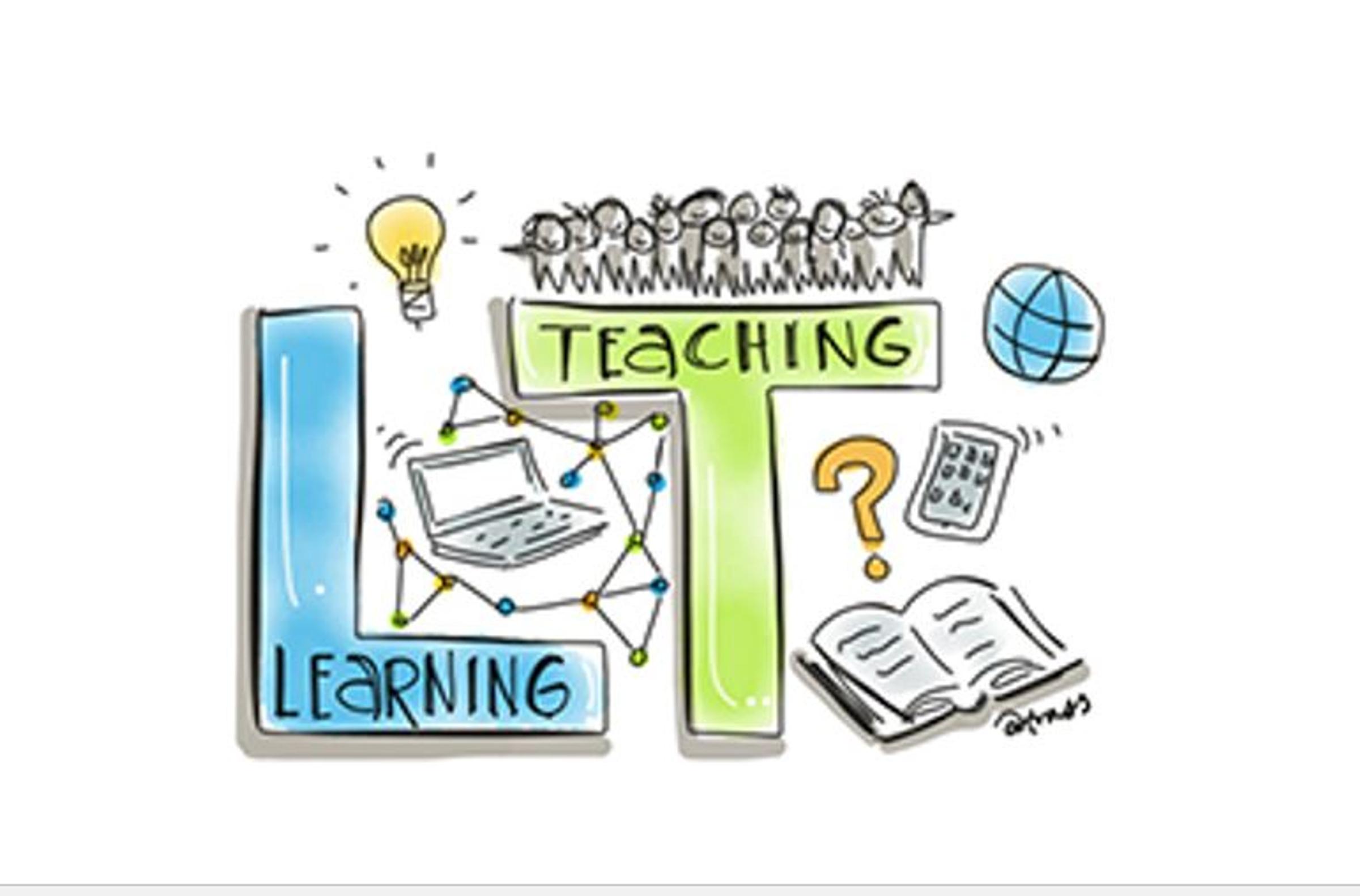
Learning & Teaching
Learning and Teaching encompasses the following areas: Student Outcomes, Curriculum, Assessment, Reporting, Principles and Pedagogy.
We are excited to invite you to our upcoming Celebration of Learning, where students from Prep to Year 6 will showcase their creativity, curiosity, and problem-solving skills through the lens of geography and design.
PLEASE NOTE THE DATE CHANGE FOR OUR CELEBRATION OF LEARNING - It will now be held on Thursday, December 4.
This event highlights the incredible learning that has taken place across all year levels, with students applying the design process to explore how people interact with and care for the world around them.
Throughout the term, students have explored geographical concepts and applied design thinking to address real-world challenges and opportunities. Each year level has approached this theme in unique and meaningful ways:
Year 5 and 6 students have investigated how communities respond to natural disasters. Using their research and design skills, they have developed thoughtful designs and models to help communities prepare for, respond to, and recover from these challenging events.
Our Celebration of Learning is an excellent opportunity for families and community members to see student learning in action and appreciate the depth of thinking, creativity, and collaboration that occurs across our school.
We look forward to welcoming you to this special event and celebrating the achievements of our students together!
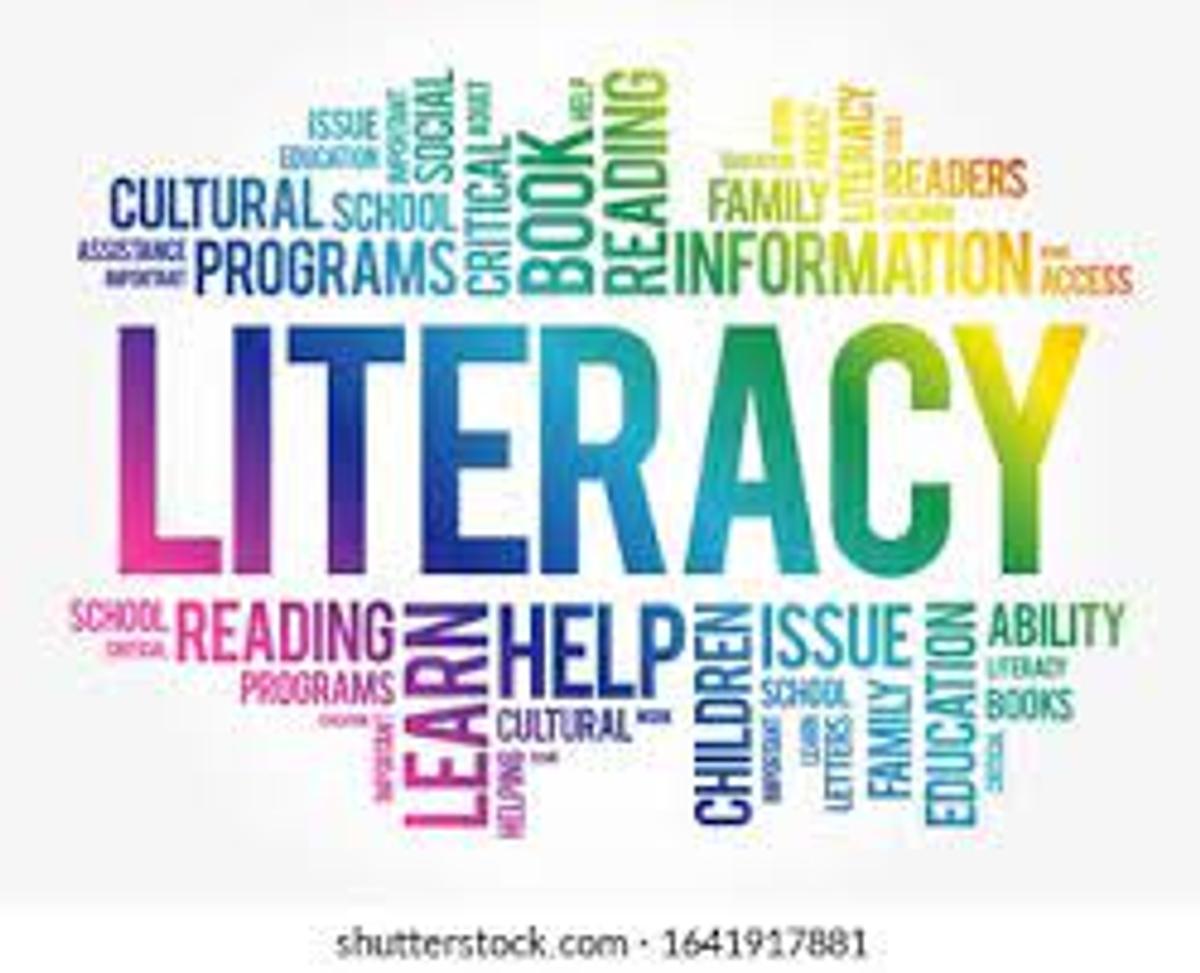

Reading is more than just saying the words on a page. It’s about understanding what we read. This skill, called reading comprehension, helps children make sense of stories, learn new information, and think critically about the world around them.
When children truly understand what they’re reading, it also shows in how they read. Good comprehension allows readers to use expression, read with proper phrasing, and sound fluent rather than monotone. Fluency and expression go hand in hand with understanding. They are signs that a reader is making meaning from the text, not just decoding words.
At home, you can support your child’s comprehension with a few simple strategies:
Retelling - After reading, ask your child to describe what happened in their own words. This helps them recall key details and understand the story’s structure.
Summarising - Encourage them to share the main idea of what they read. This helps them identify what’s most important.
Paraphrasing - Have your child explain a section or paragraph in a new way. This builds deeper understanding and vocabulary.
Other helpful strategies include:
Clarifying: remind them it’s okay to pause, reread, or ask questions when something doesn’t make sense.
These conversations can make a big difference. When children think and talk about what they read, and read with fluency and expression, they strengthen their comprehension, build confidence, and develop a genuine enjoyment of reading.
About Eric Carle
Eric Carle,1929–2021, was an American author and illustrator famous for his colourful, collage style picture books.
His stories are engaging, imaginative, and perfect for helping children develop a love of reading. Carle’s books encourage curiosity, creativity, and thinking about the world around us. Eric Carle was a prolific author, and he created over 70 books.
Some books to explore:
A House for Hermit Crab
Reading tip for all books:
Eric Carle’s books are perfect for reading with expression and fluency. Encourage your child to use voices and act out characters. Talking about the story, predicting what happens next, and retelling in their own words strengthens comprehension, builds confidence, and helps children enjoy reading even more.
The Mysterious Footprints
On your way to school one morning, you notice a trail of strange footprints leading across the playground. They’re much too big or too small, to be yours, and they seem to disappear behind the trees.
What could have made them? Where do they lead?
Write or draw a story about what happens when you decide to follow the mysterious footprints.
Parent Note: This activity is optional.
Here are some ideas to support your child at each stage:
Step 1- Discussion
Start by talking about the idea together.
Where might they lead, somewhere exciting, scary, or magical?
Step 2 – Writing or drawing
Brainstorm together some possible sentence starters, describe the characters etc.. Encourage your child to write a short story or draw a picture showing what happens next. Let their imagination go anywhere.
Step 3 – Editing together
After they’ve finished, celebrate their effort first.
Then help them edit their work by:
Asking questions like, “Can you describe what the footprints look like?” or “What happens at the end?”
A note on editing
Editing is an important part of writing because it helps young writers take pride in their ideas and see how small changes can make a big difference. It’s not just about fixing spelling, punctuation, or capitalization, although tools like dictionaries and word lists can be helpful for those.
Editing also means improving sentences, adding descriptive words, and including details that make writing clearer and more engaging. Thoughtful editing teaches students that even small changes can strengthen their ideas and help them express themselves with confidence.
Issue 8 catalogues are now available.
Look out for your copy of Book Club Issue 8 in your child's schoolbag.
Orders due back by Friday, 28th November.
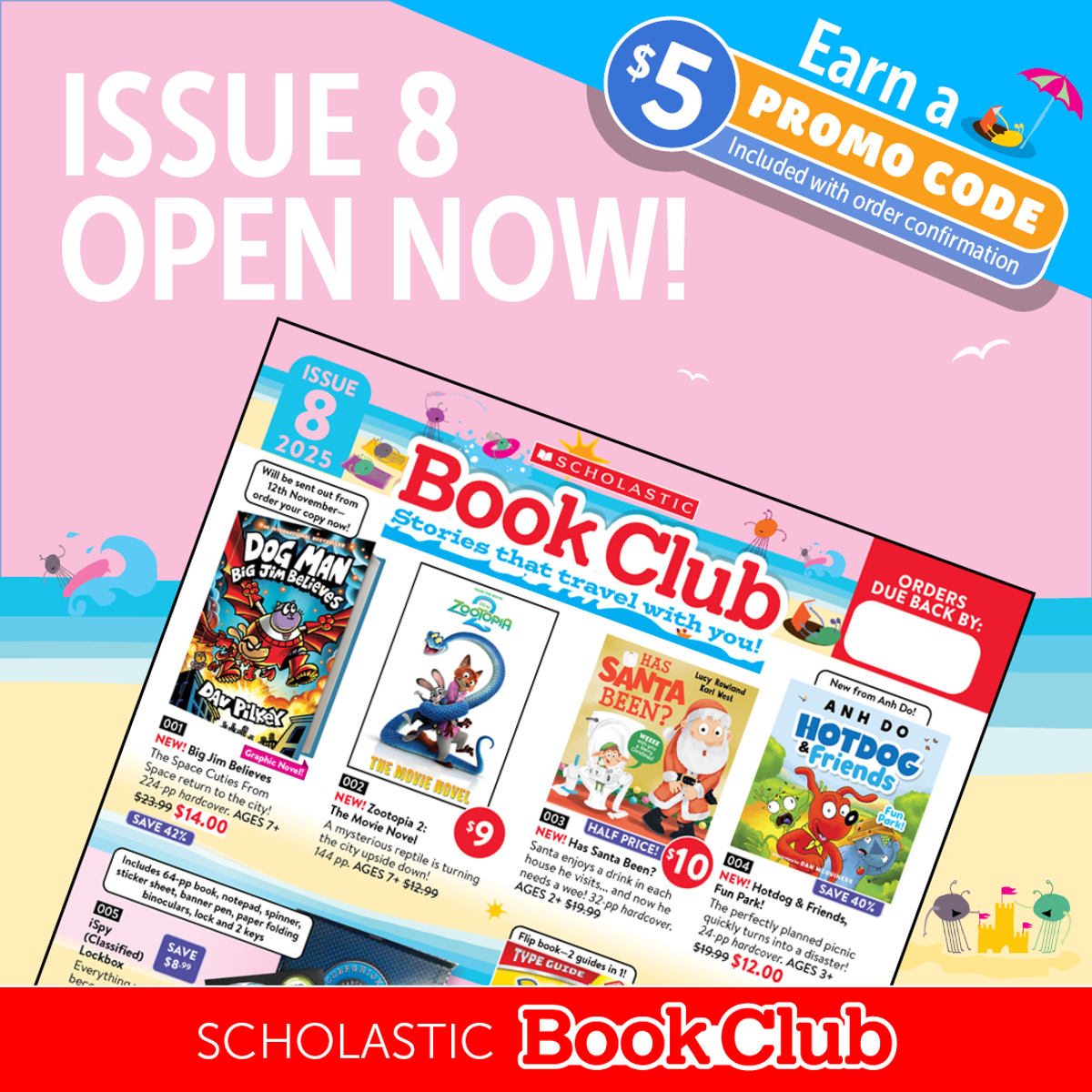



Have a great week.
Bernadette Parnis
bparnis@sfmoreland.catholic.edu.au
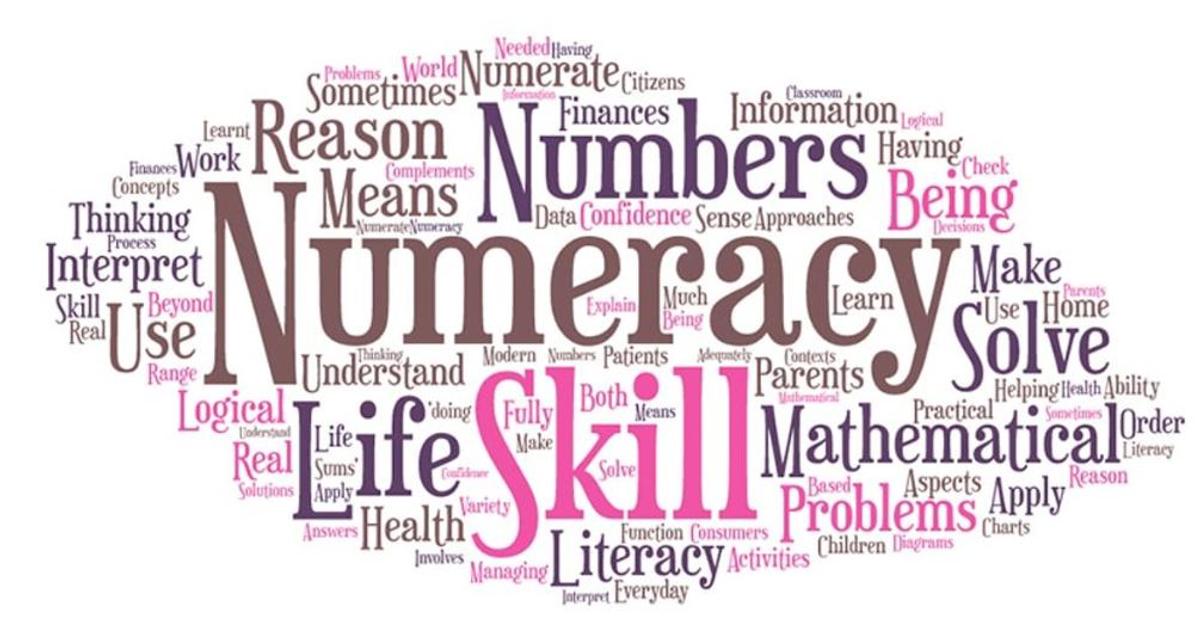

Huge congratulations to our APSMO award winners! The Maths Olympiad is an Australasian competition made up of four rounds, with students solving five challenging problems each month. This program encourages persistence, resilience, and strong problem-solving skills — qualities our students have shown in abundance. We are so proud of their effort and achievement!
1. APSMO Top Achiever at St. Fidelis 2025
Congratulations to Caleb Porter , our school’s top achiever in the Maths Olympiad! His dedication, hard work, and persistence throughout the year have earned him the highest score. Well done, Caleb — an outstanding effort!
2. "Excellence in Effort and Attitude Award"
Congratulations to Riley Lewis for her amazing improvement in Maths Olympiad problem-solving this year. She has demonstrated impressive growth and determination, achieving stronger results and showing great perseverance. Well done, Riley — keep up the excellent work!
3. Second Highest Score fo St. Fidelis 2025
Congratulations Jacob Pasceri for your great score in the Olympiad. You’ve done so well to get second position. You should be proud of your achievements this year!
4. Most determined
Congratulations to Felix Carr for your amazing work on problem solving this year. You show great perseverance and determination and have contributed well to all sessions this year. Well done, Felix!
5. Hard worker
Congratulations to Samuel Louca, awarded for his consistent effort and determination throughout the year. Samuel works hard in every session and makes valuable contributions to all class discussions. Well done, Samuel!
6. Overall Improvement
Congratulations Akira Romeo for you consistent improvement in your Olympiad results. You’ve done so well in your first year in the program and made great gains. Keep up the great work.
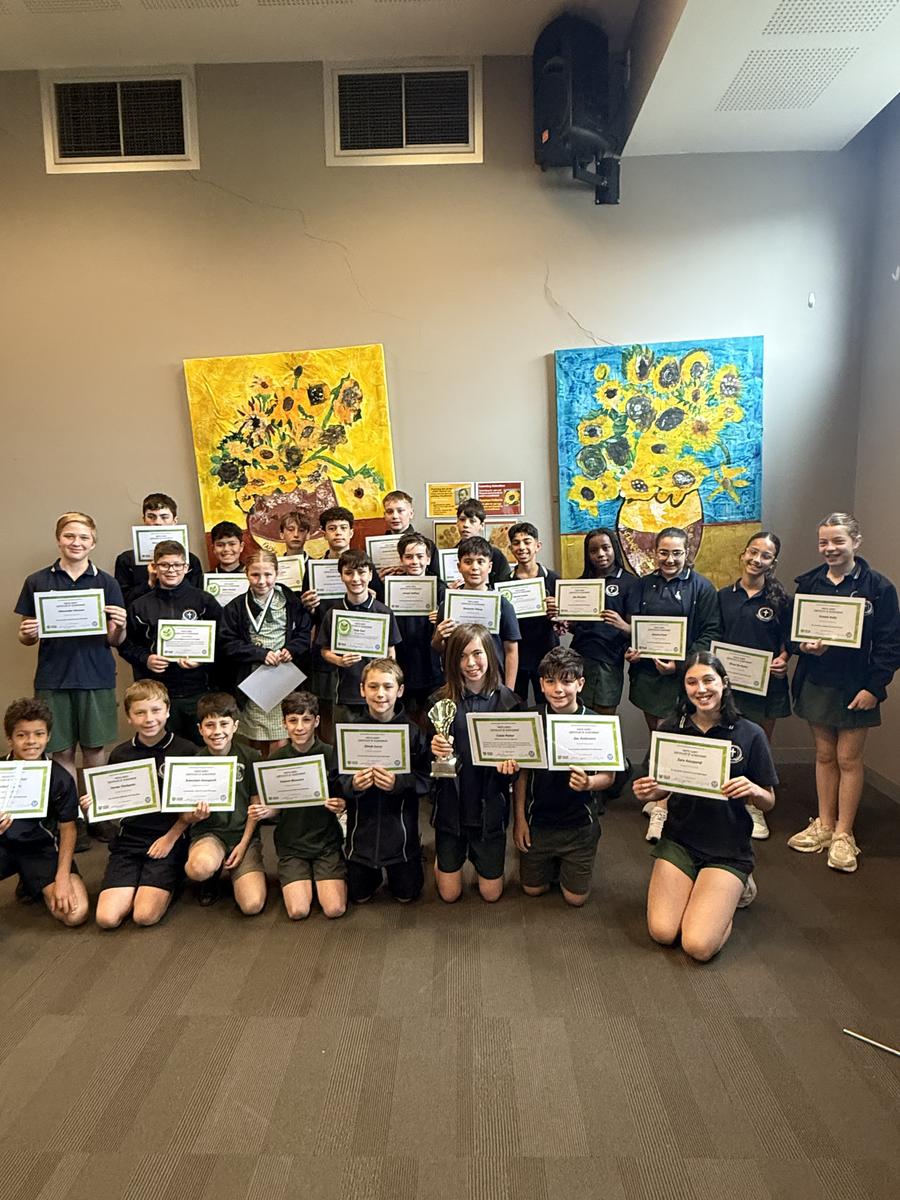
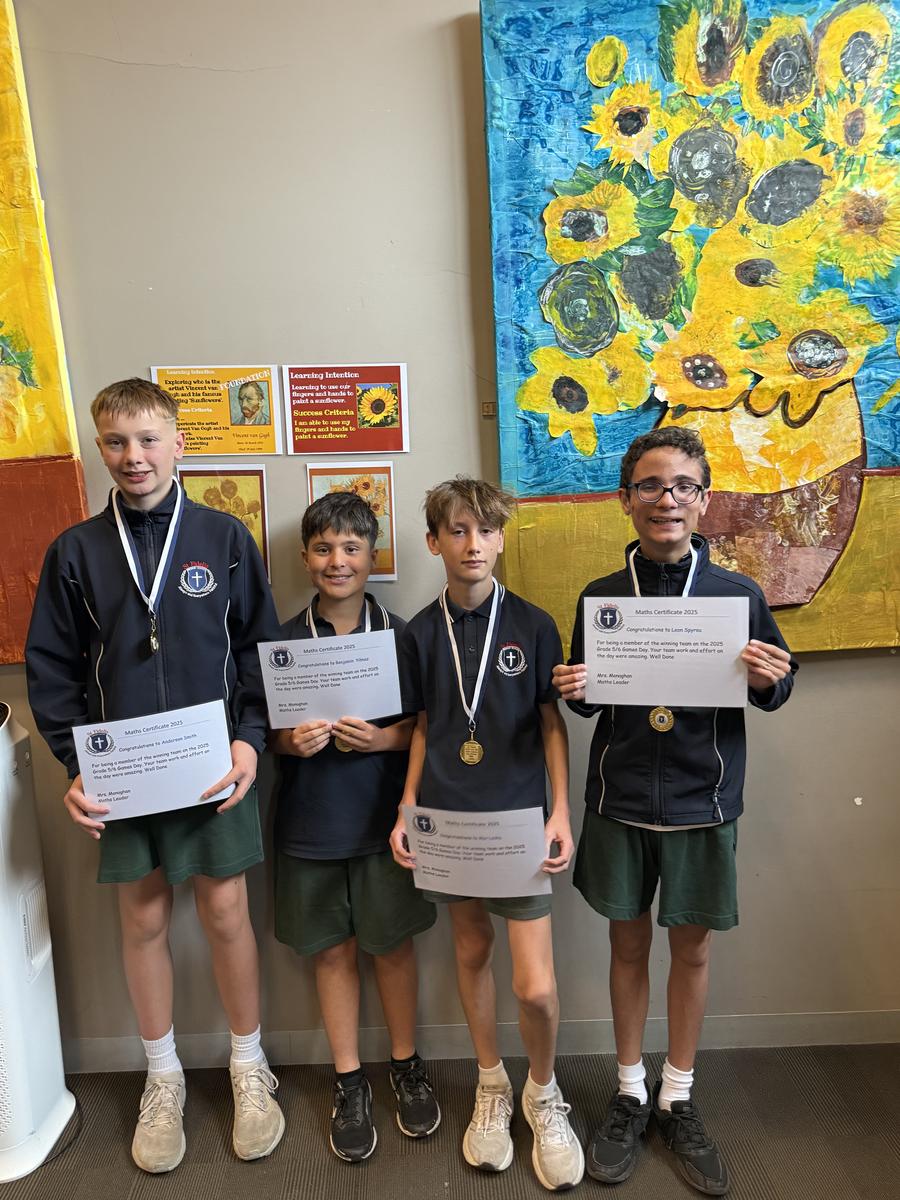
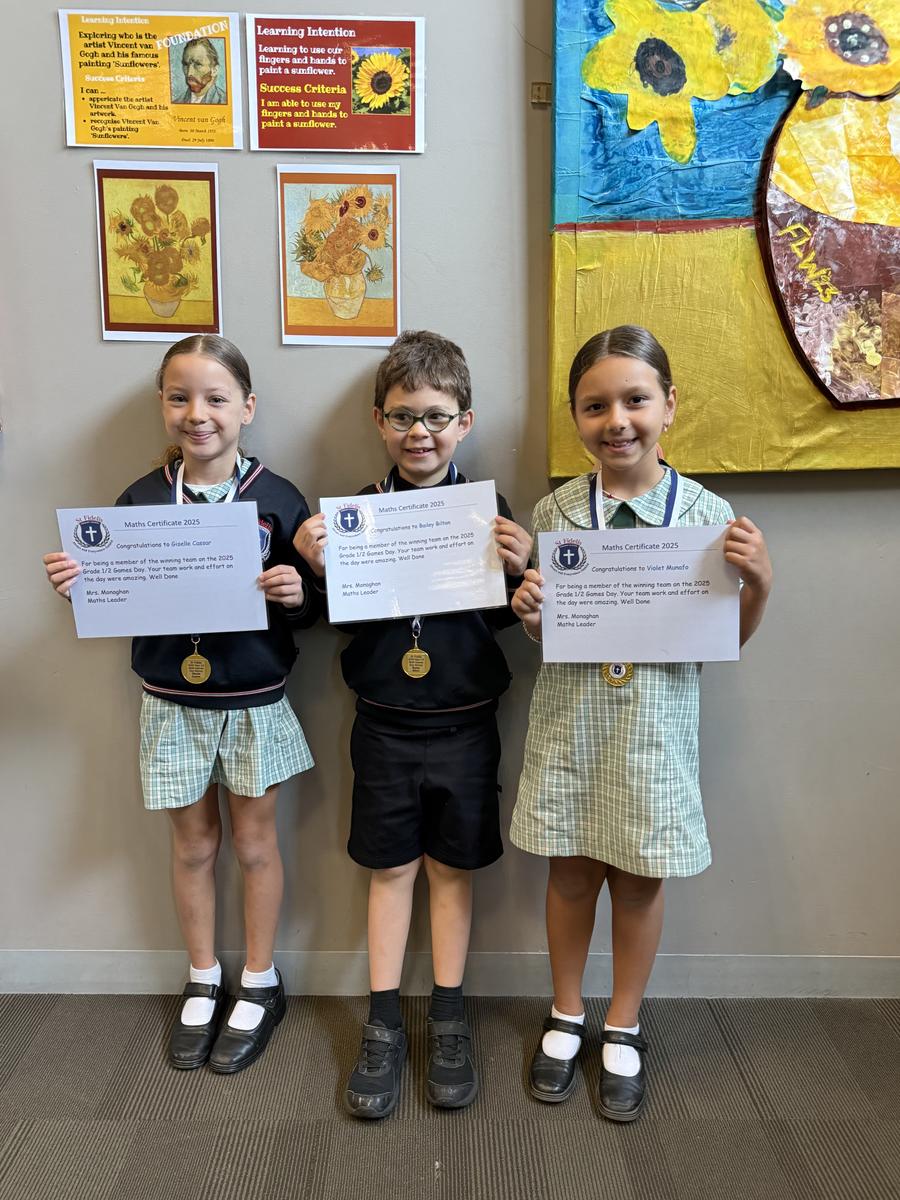



A huge thank you to all the parents who generously gave their time and effort to support our recent Maths Games Days. We’re so fortunate to have such a wonderful, supportive community of parents who help make these days possible. The students were fantastic - fully engaged and enthusiastic throughout all the activities.
At last Friday’s assembly, our winning teams were presented with their medals and certificates. Congratulations to these students for their outstanding teamwork, perseverance, and collaboration in achieving the highest scores of the day!
Next Games Day: Tuesday 18th November - Years 3/4
If you are free at any stage of the day we would love to see you.
Students have recently completed their PATM assessments, and it was wonderful to see so many approach the task with a positive attitude and remain focused throughout. This assessment is adaptive, meaning the questions adjust based on each student’s responses. Over the coming weeks, staff will analyse the results to help inform our planning. The PATM assessment is just one of the many pieces of evidence we use to assess your child’s progress against the curriculum standards.
Counting doesn’t just happen at school — it can be part of everyday life! Here are some easy and enjoyable ways to help your child practise counting skills at home, no matter their age.
Counting is an important part of developing number sense and understanding how our number system works. As students move through school, their counting skills grow from simple number sequences to working with large numbers, fractions and decimals.
Foundation (Prep): Children learn to count forwards and backwards to 20, match numbers to quantities, and understand that the last number said tells how many in the group.
Year 1: Students count to and from 100, skip count by 2s, 5s and 10s, and begin to recognise simple number patterns.
Use everyday items (coins, blocks, pegs) to make groups of 10 or 20.
Year 2: Counting extends to 1,000. Students skip count by 2s, 3s, 5s and 10s and explore number sequences that go up and down.
Year 3: Children count by larger numbers like 3s, 4s and 6s, recognise odd and even numbers, and continue patterns using addition and multiplication.
Play card or dice games that use adding and skip counting to keep score.
Year 4: Students count in larger numbers and begin counting by fractions such as halves and quarters. They use number patterns that link to times tables and division.
Year 5: Counting includes bigger steps like tens of thousands, and students begin to count by decimals such as 0.1 or 0.2.
Create patterns using Lego, beads, or art - describe how the pattern grows.
Year 6: Students count with positive and negative numbers, fractions and decimals, and explore more complex number patterns.
Year 7: Counting extends to include all types of numbers—whole numbers, decimals, fractions, and negatives. Students begin to describe number patterns using rules or formulas.
The St. Fidelis Annual Athletics/Sports Carnival was held on Friday, 31 October at Coburg Athletics Track.
This was the very first time we have conducted such an event so as you can imagine, everyone was very excited to attend & participate.
The weather is always a factor in running a carnival like this one and although the weather wasn’t very kind to us on Friday, everyone is to be congratulated on their persistence and getting it done in the end.
It was great to see all the team colours represented in so many different ways (socks, shirts, ribbons, wigs, hats, dresses, zinc cream etc…). This definitely brightened a dreary, wet morning.
Firstly, congratulations to all our students and teams on their enthusiastic participation in the Sprints, Baton Relay, Long Jump, Discus & Tunnel Ball. I know everyone tried their best and had a go at all the activities and that’s what the day’s all about-giving things a go.
A big thank you to the teaching staff for doing a great job in organising the year levels in challenging conditions - they were fantastic!!
Also, special thanks to our parent helpers and supporters for making a big effort to assist in conducting the events and cheer on our students. We definitely appreciated your attendance.
Other helpers came from Academy and Simmonds College and they did a marvellous job in setting up, packing up and helping officiate the events.
Final Team Results:
1st: Lee Gold
2nd: MacKillop Blue
3rd: Mannix Green
3rd: Daly Red
Once again, congratulations to all our teams on wonderful enthusiasm and performances.
Michael Jennings
Sports day Coordinator
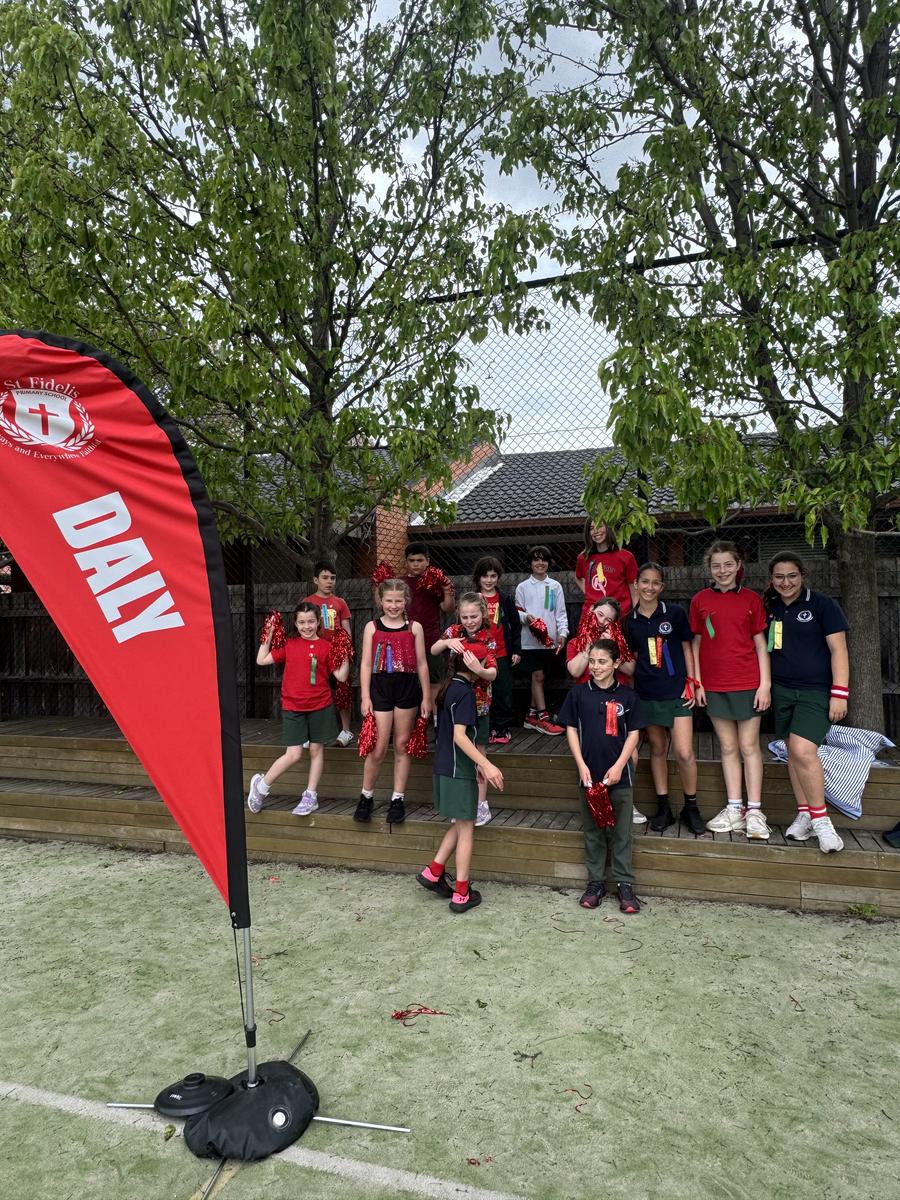
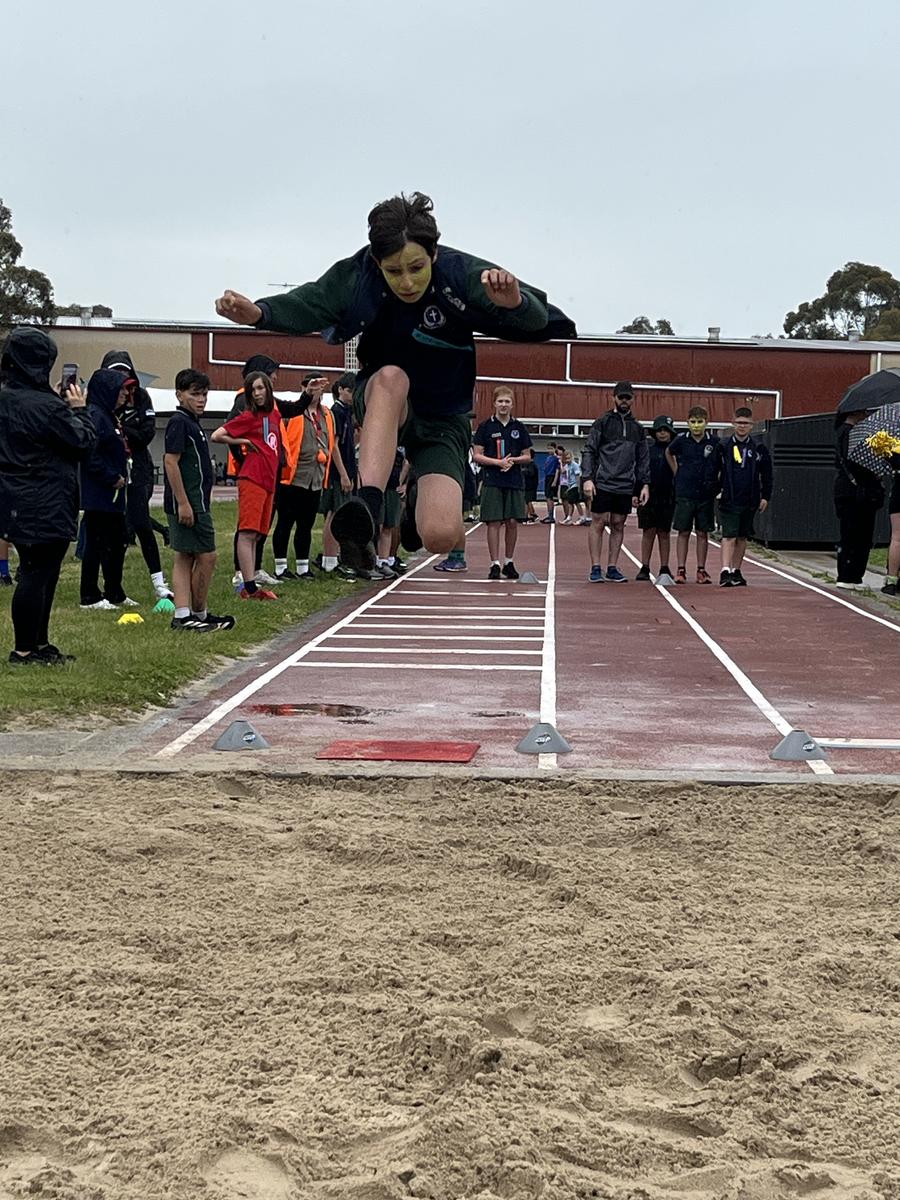
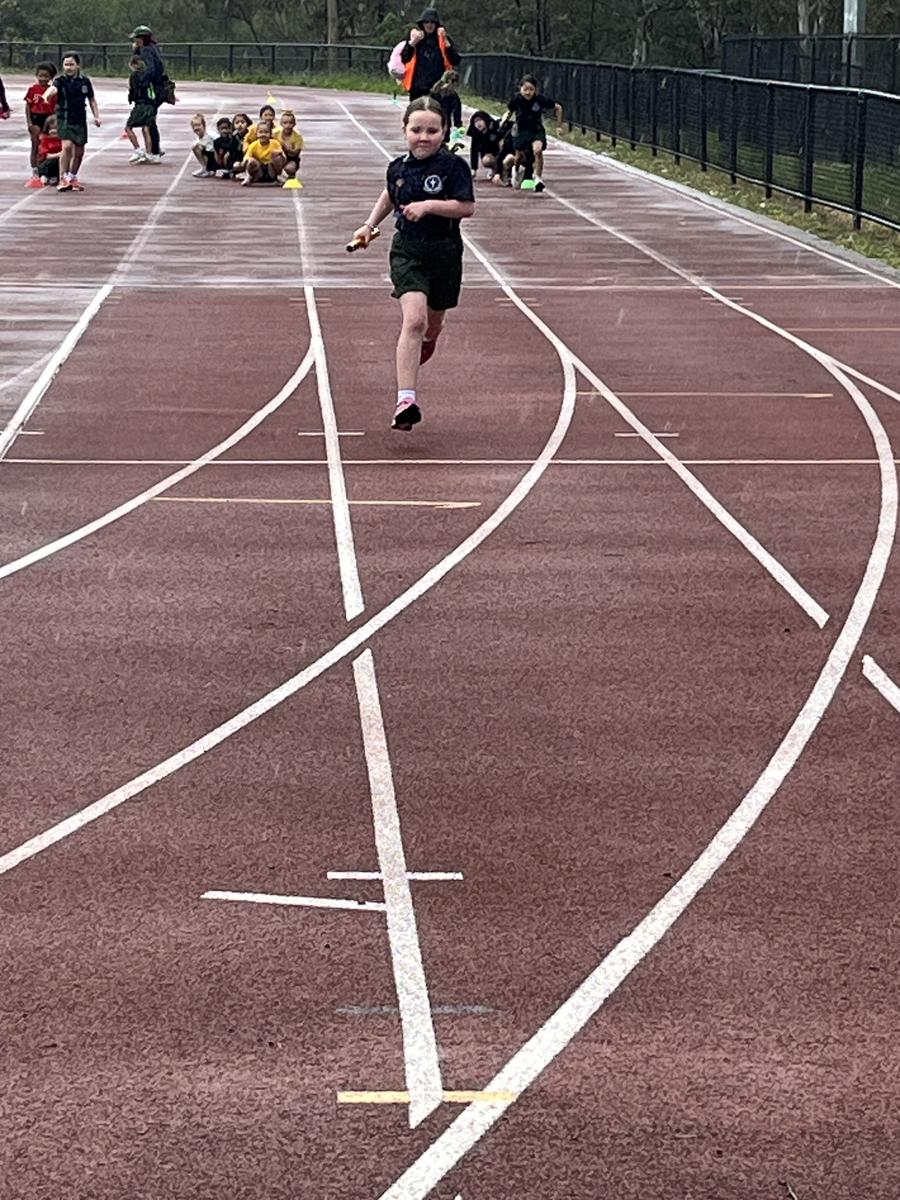
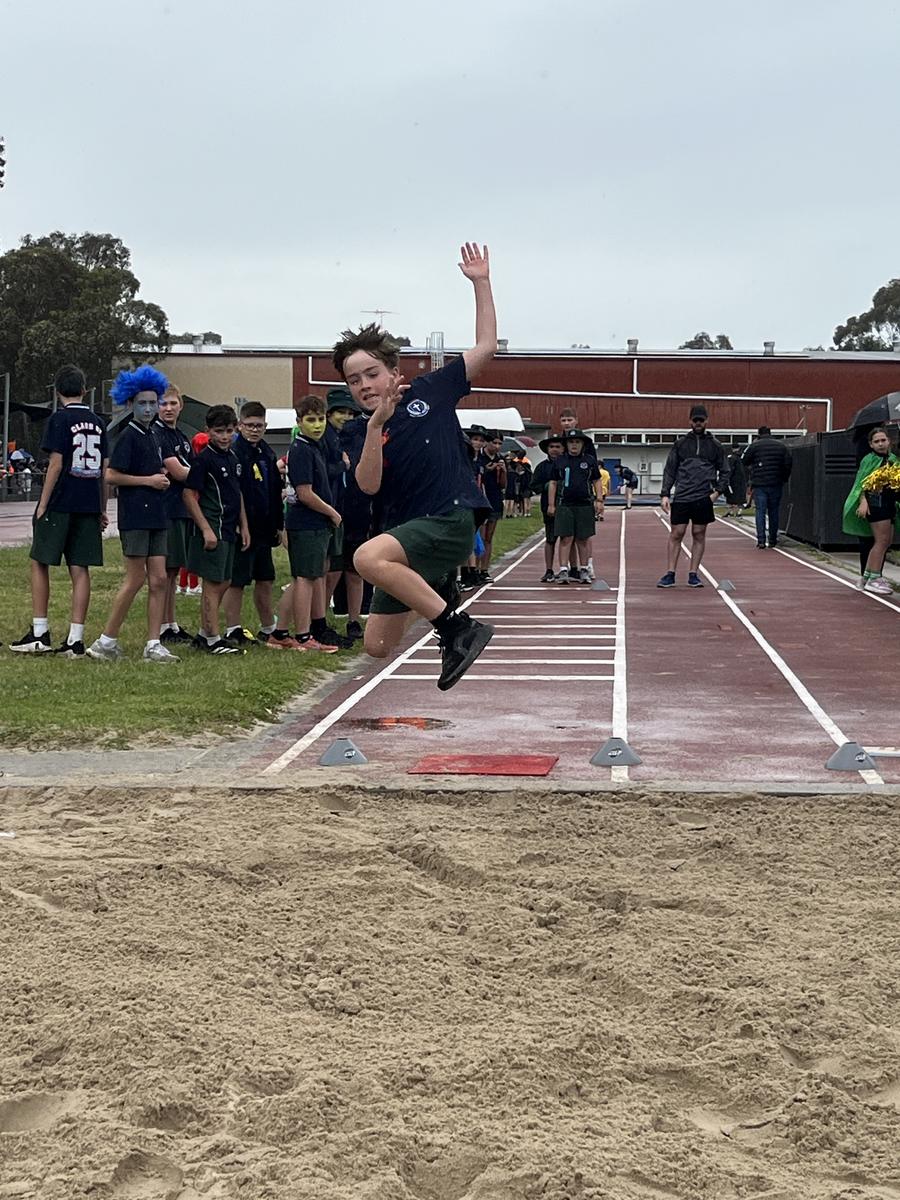

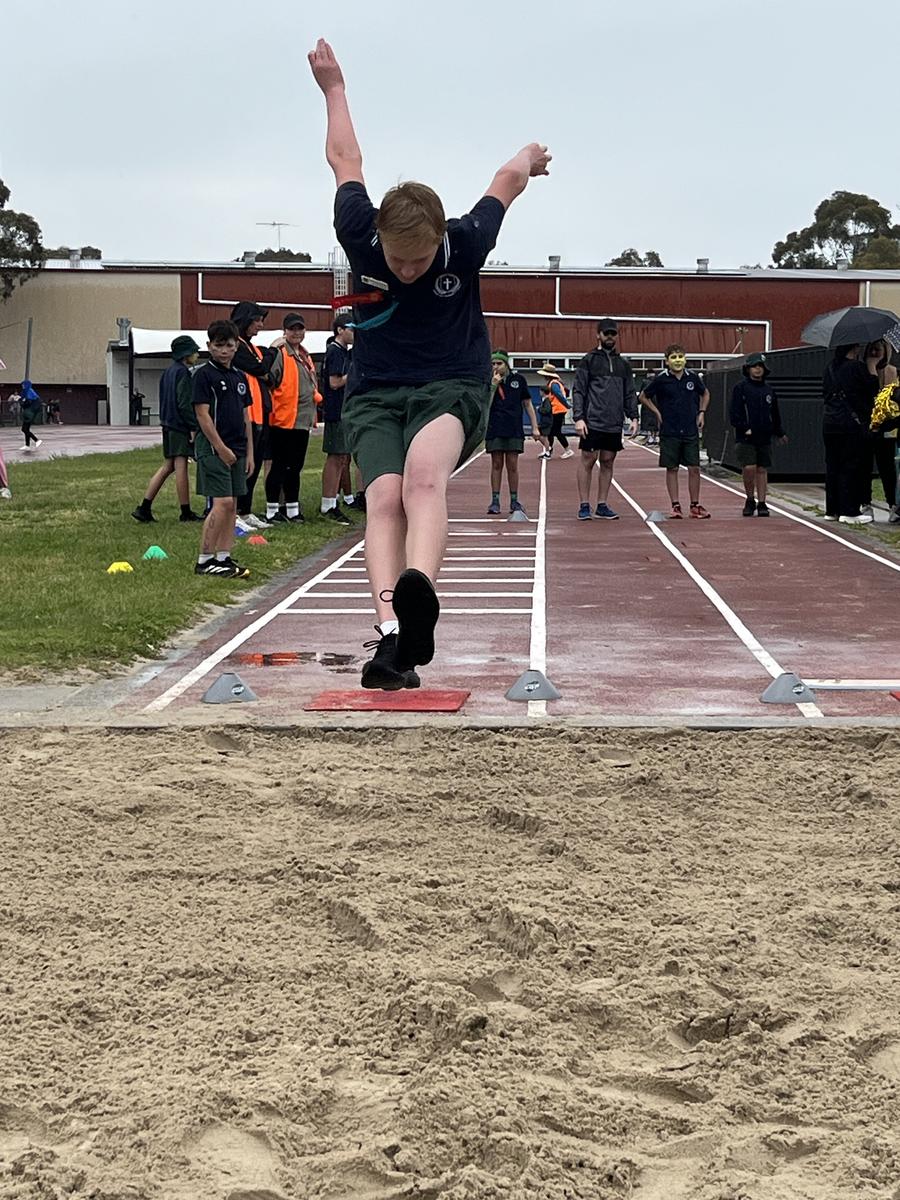
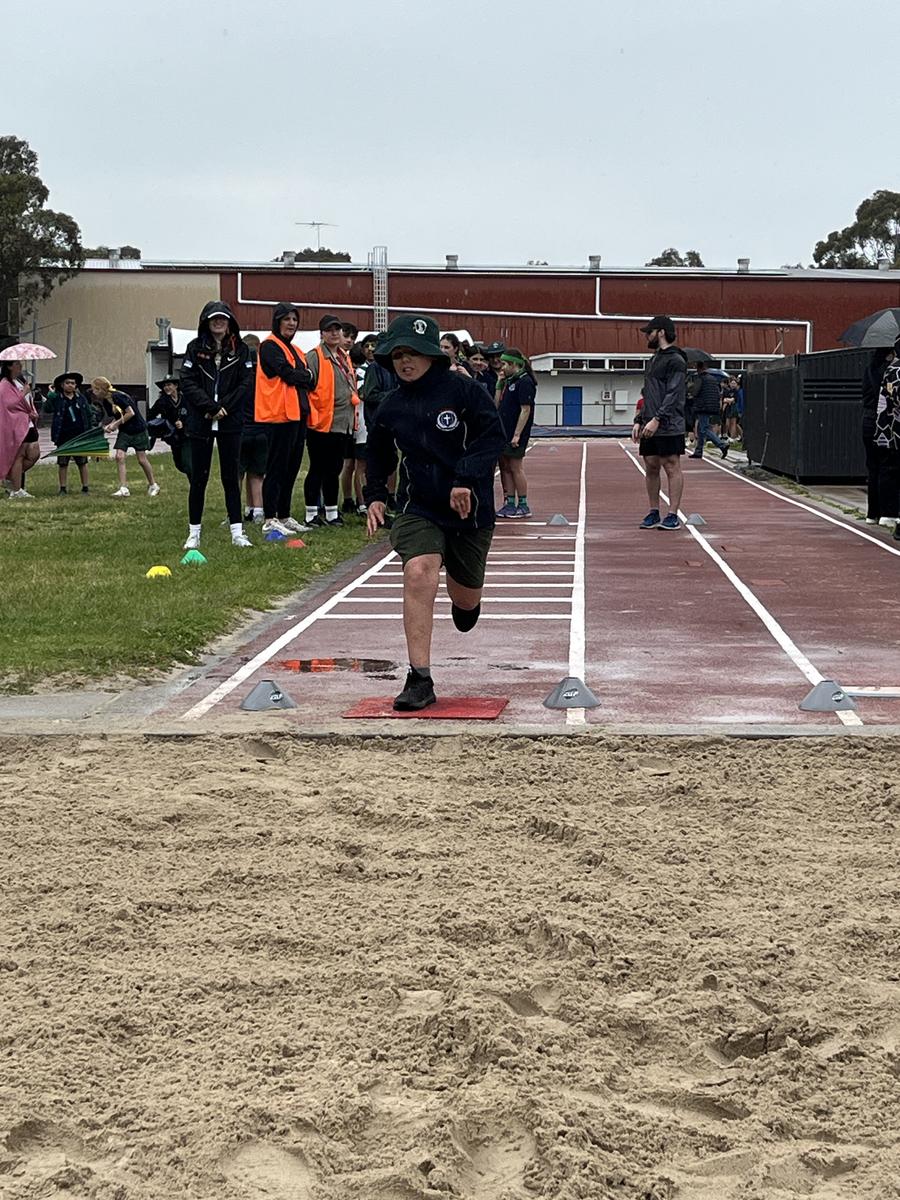
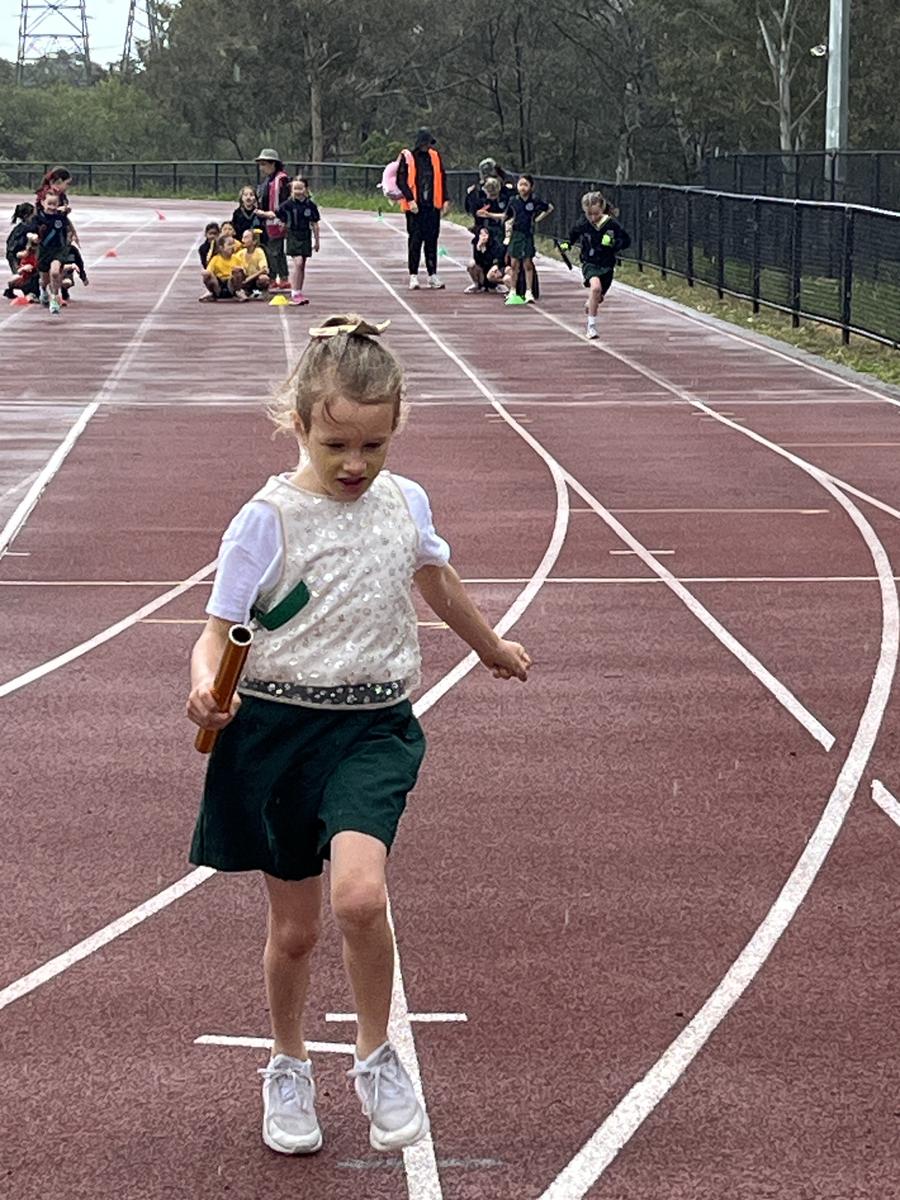
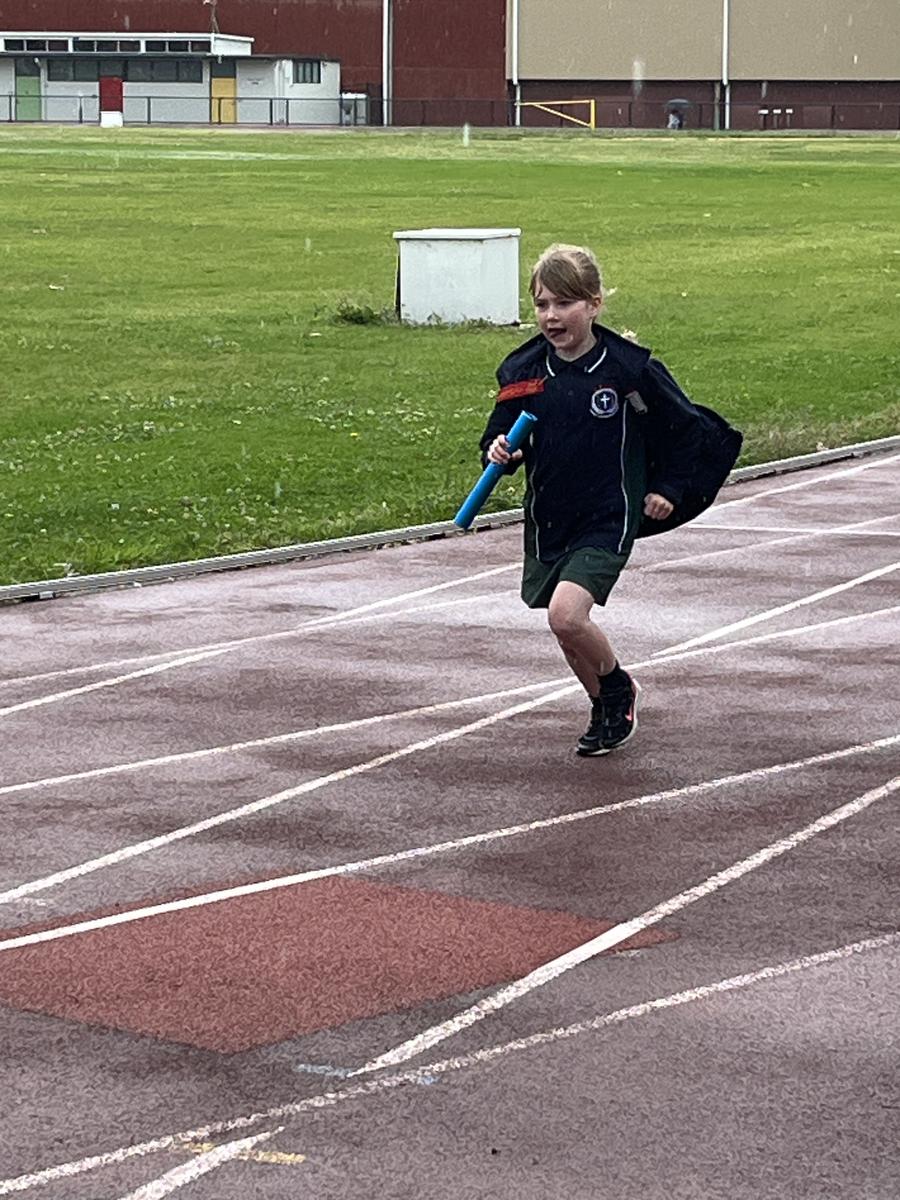
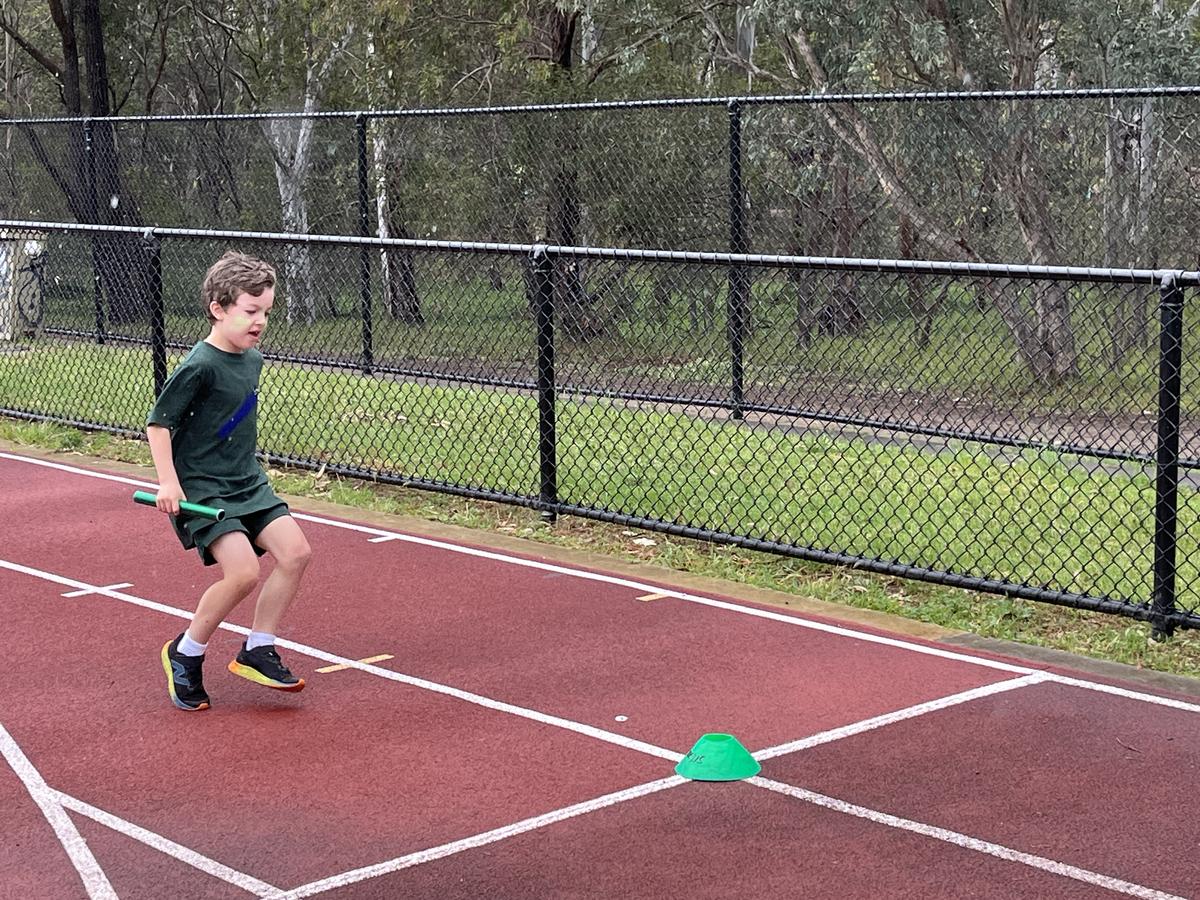
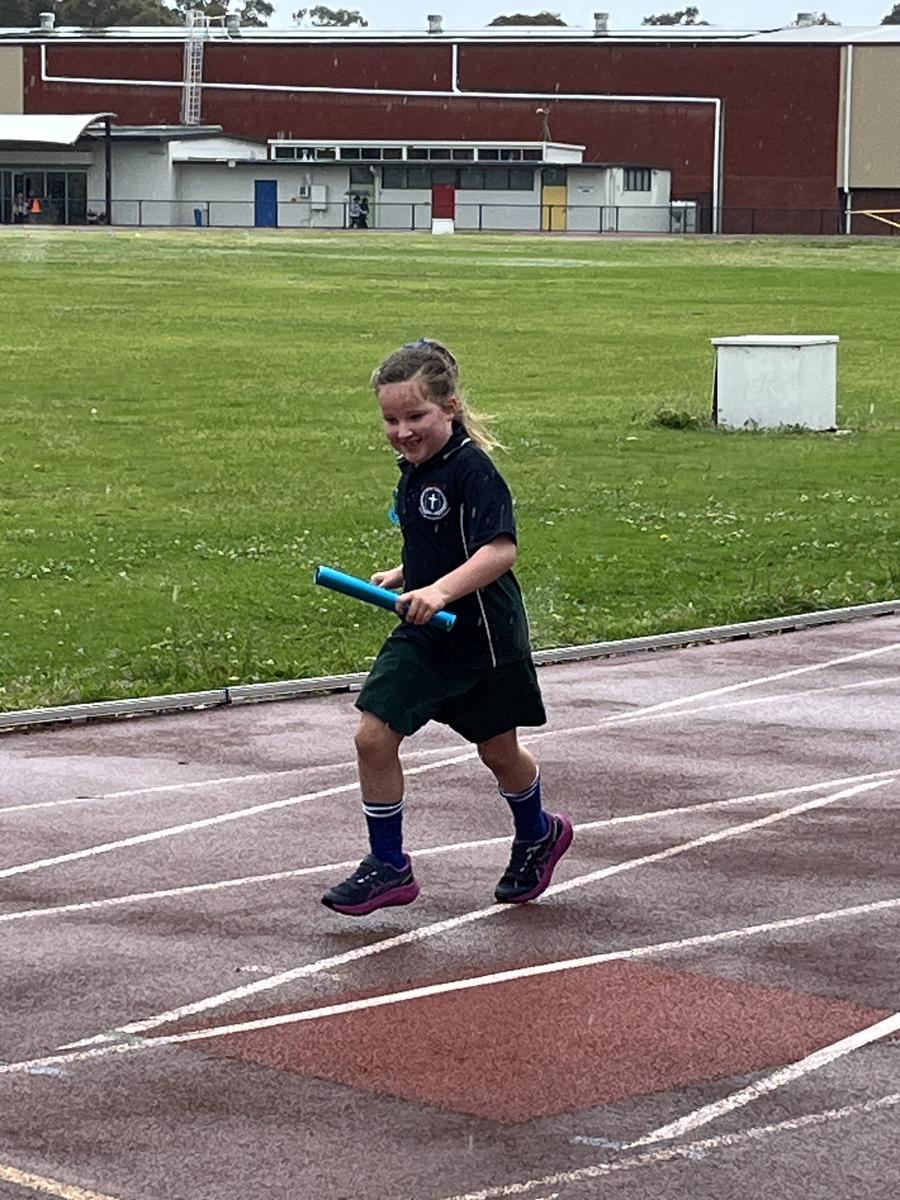
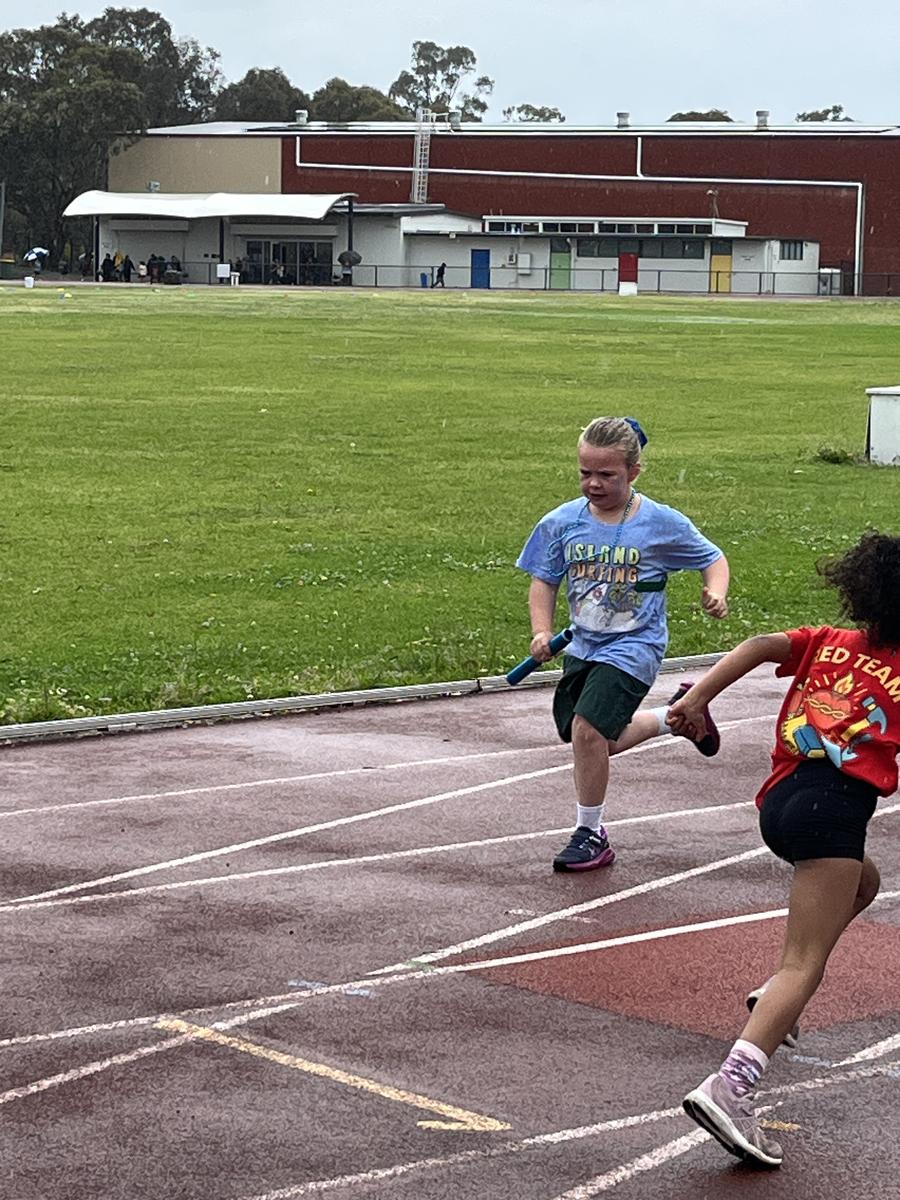
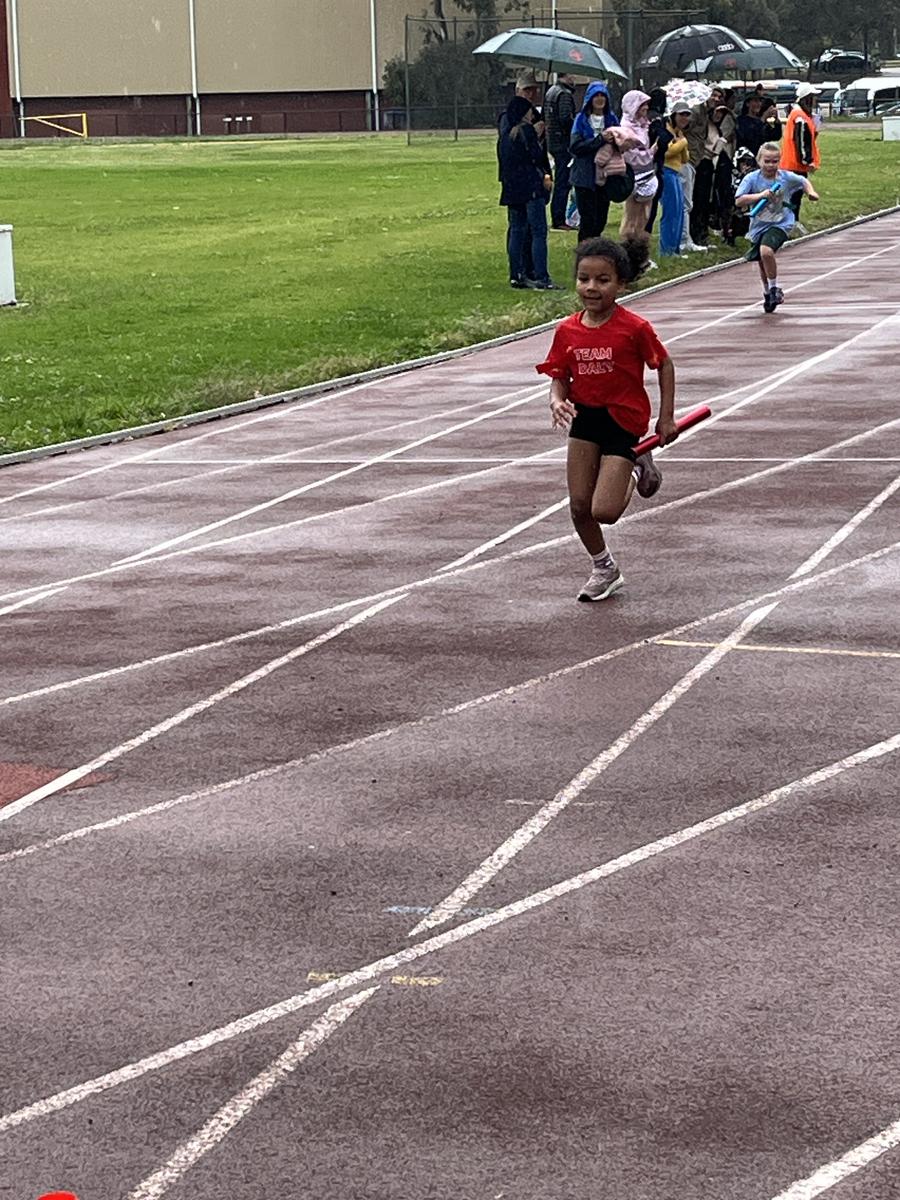
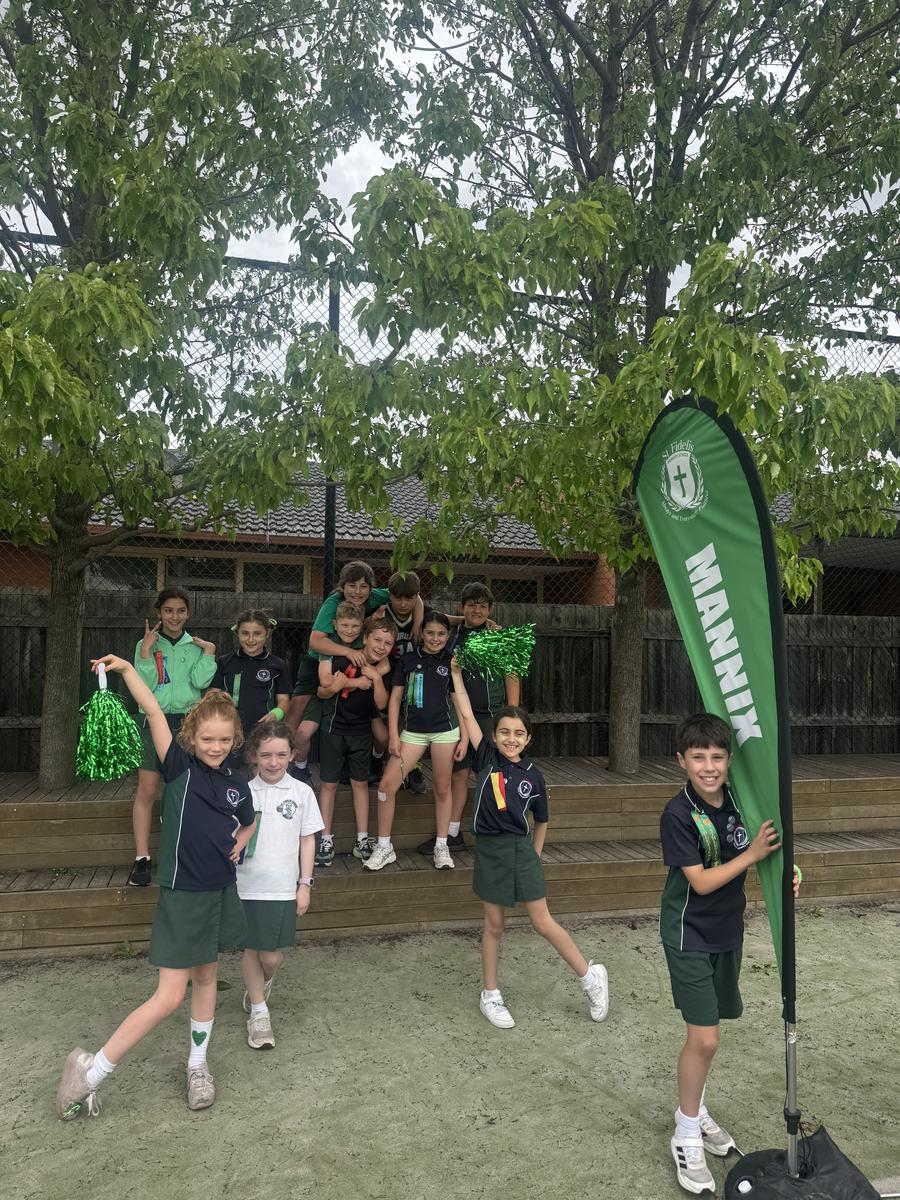

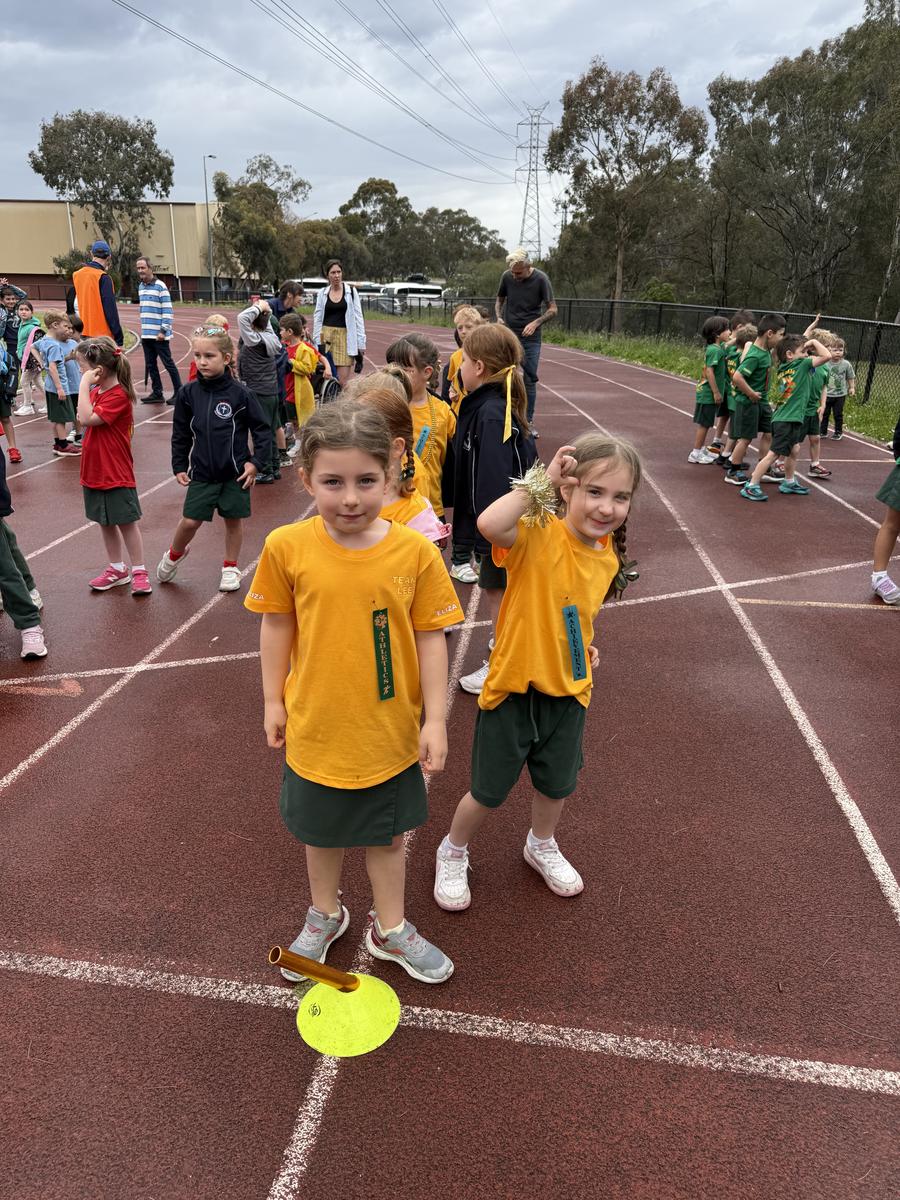
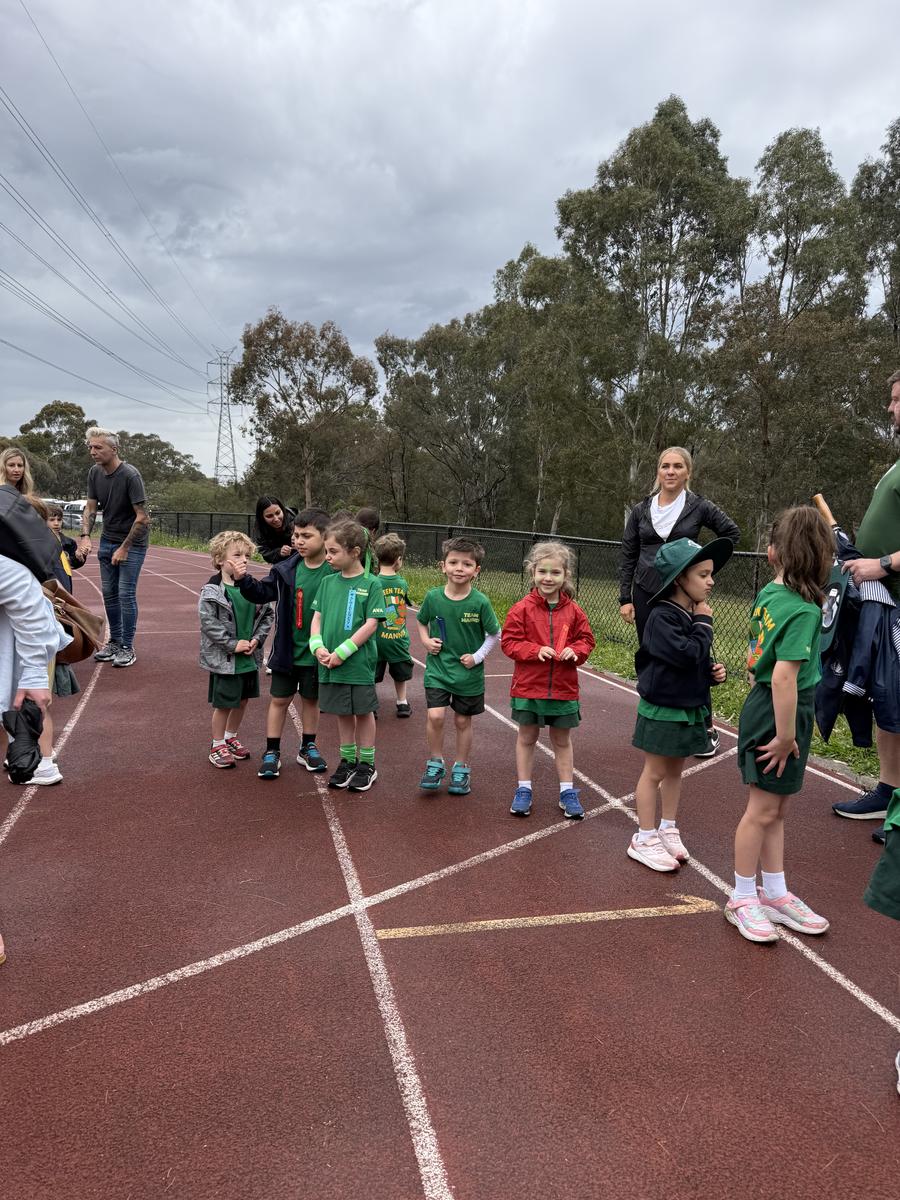
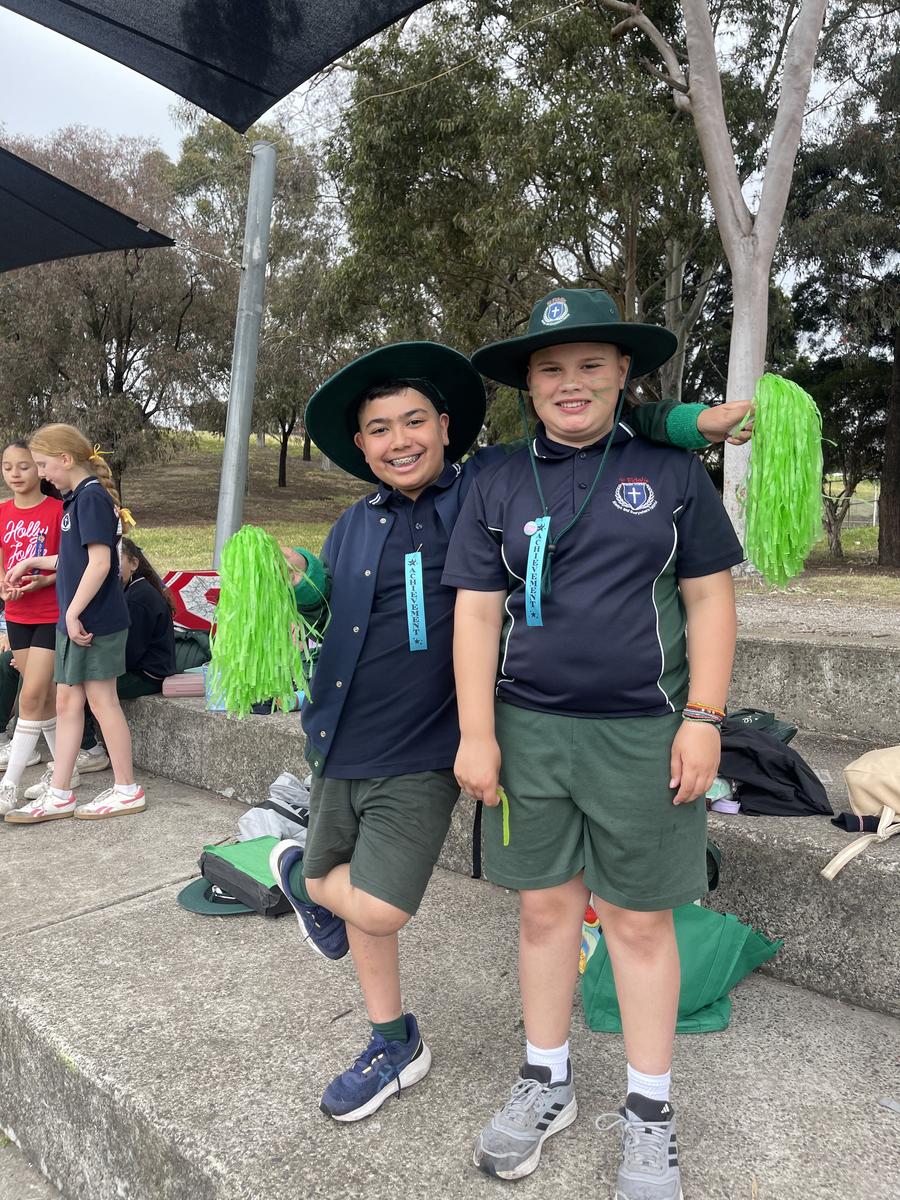
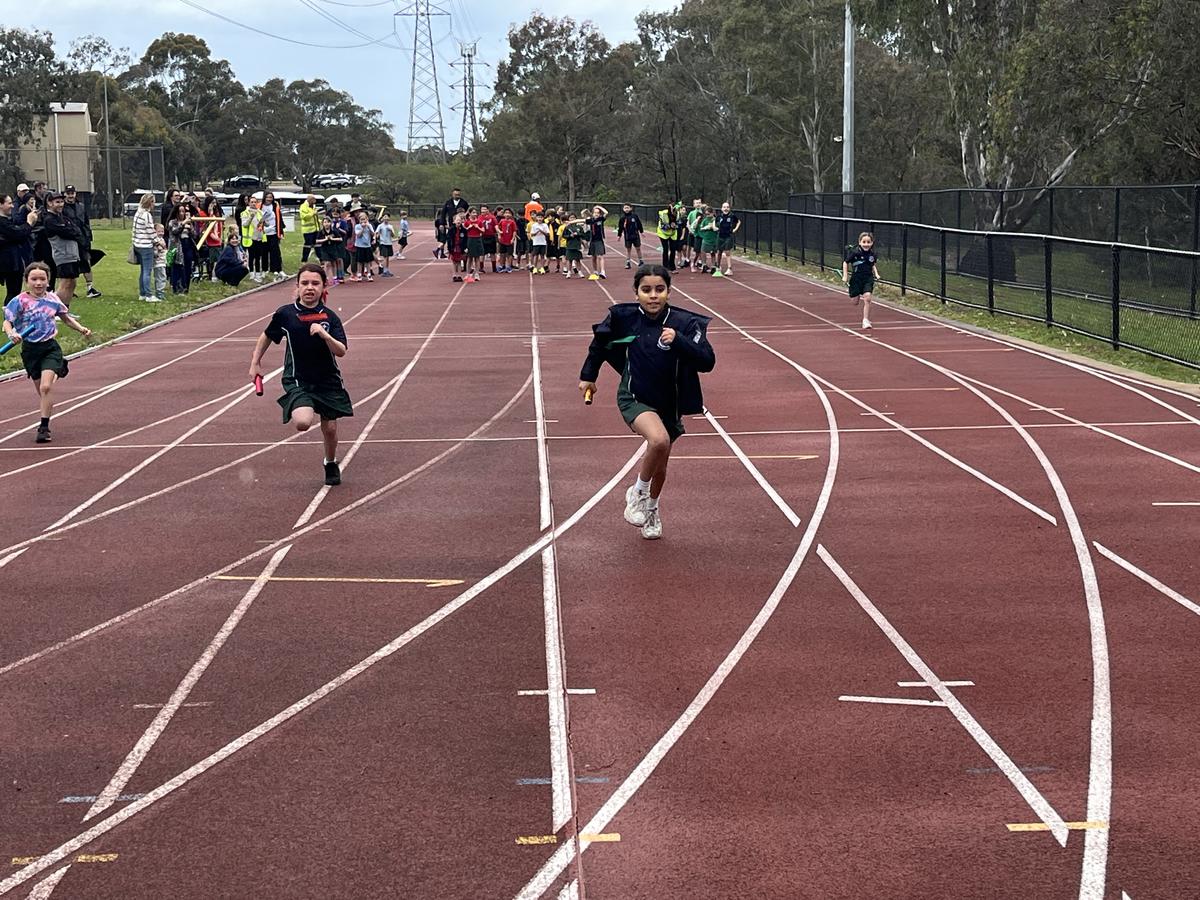
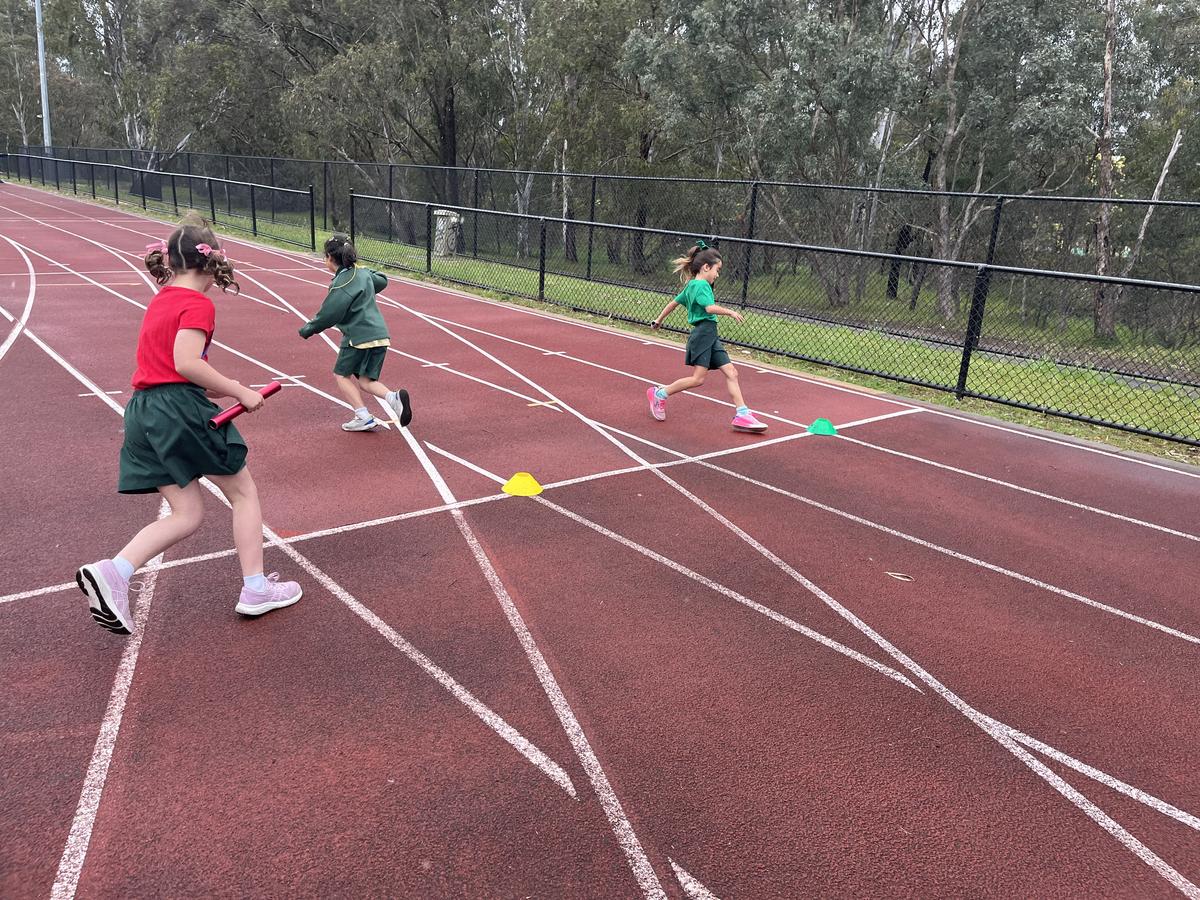
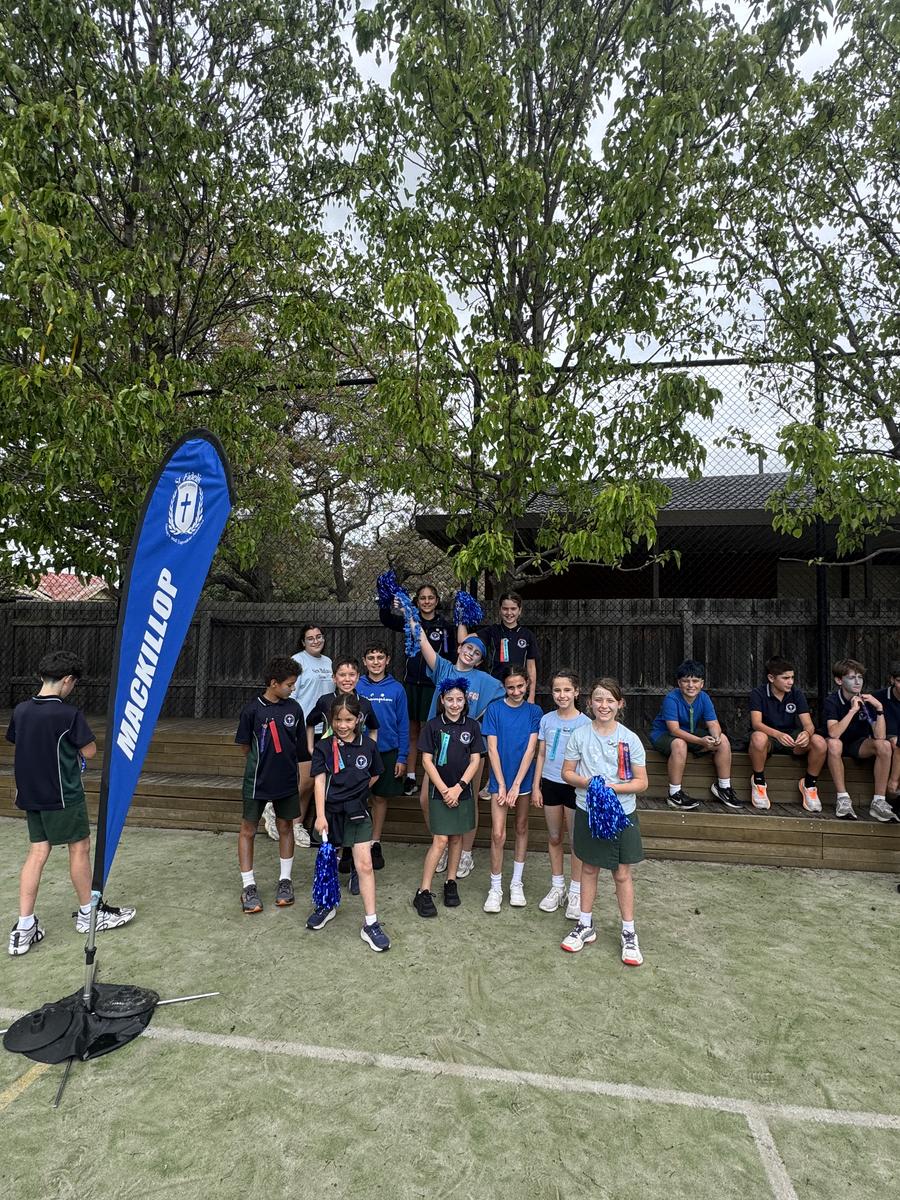

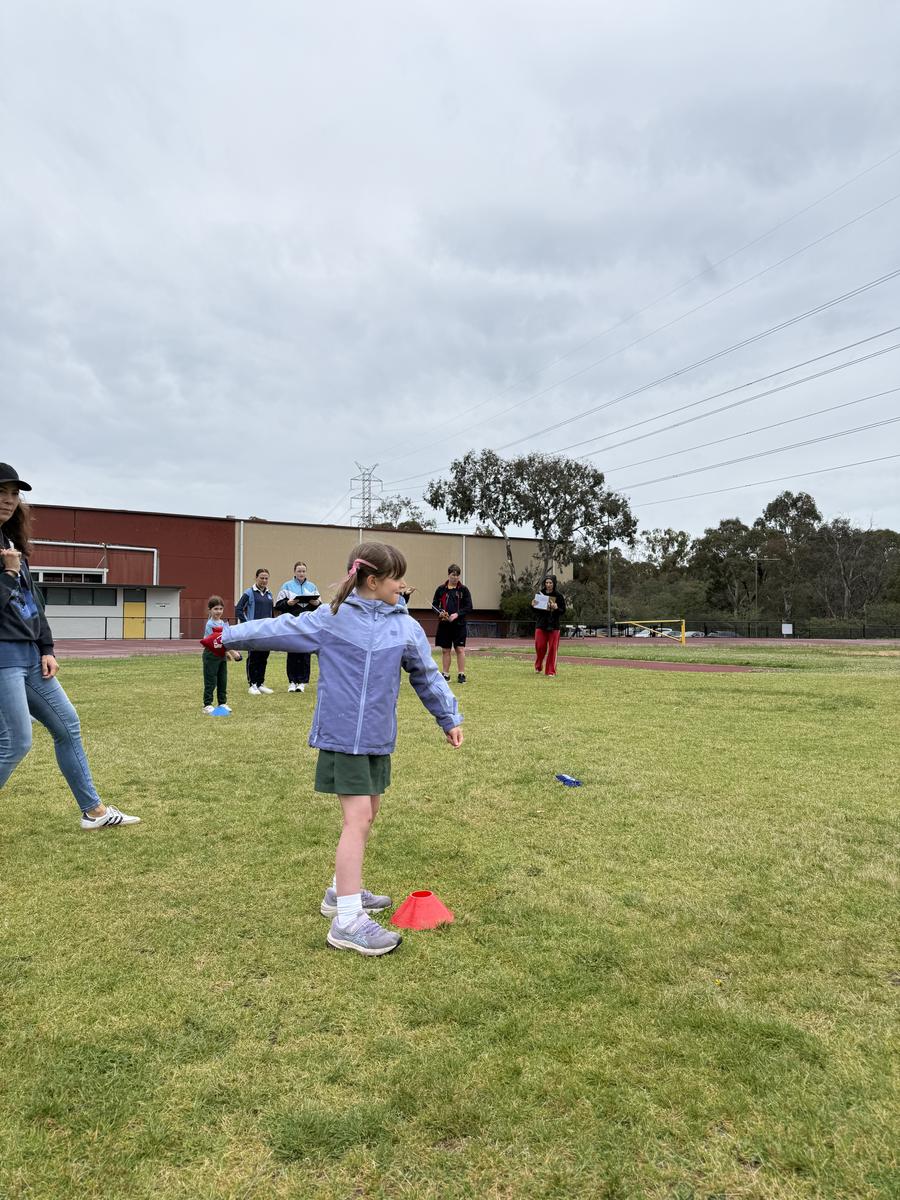
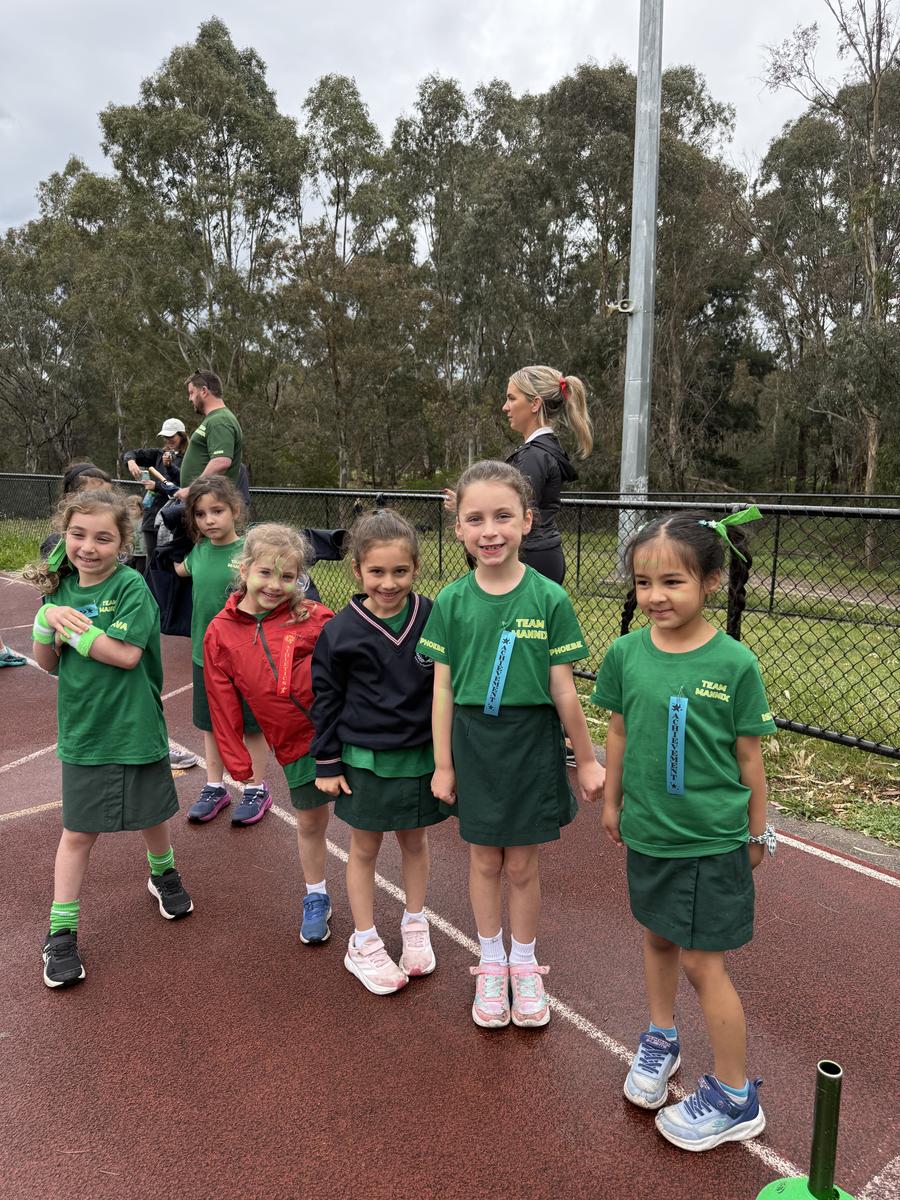
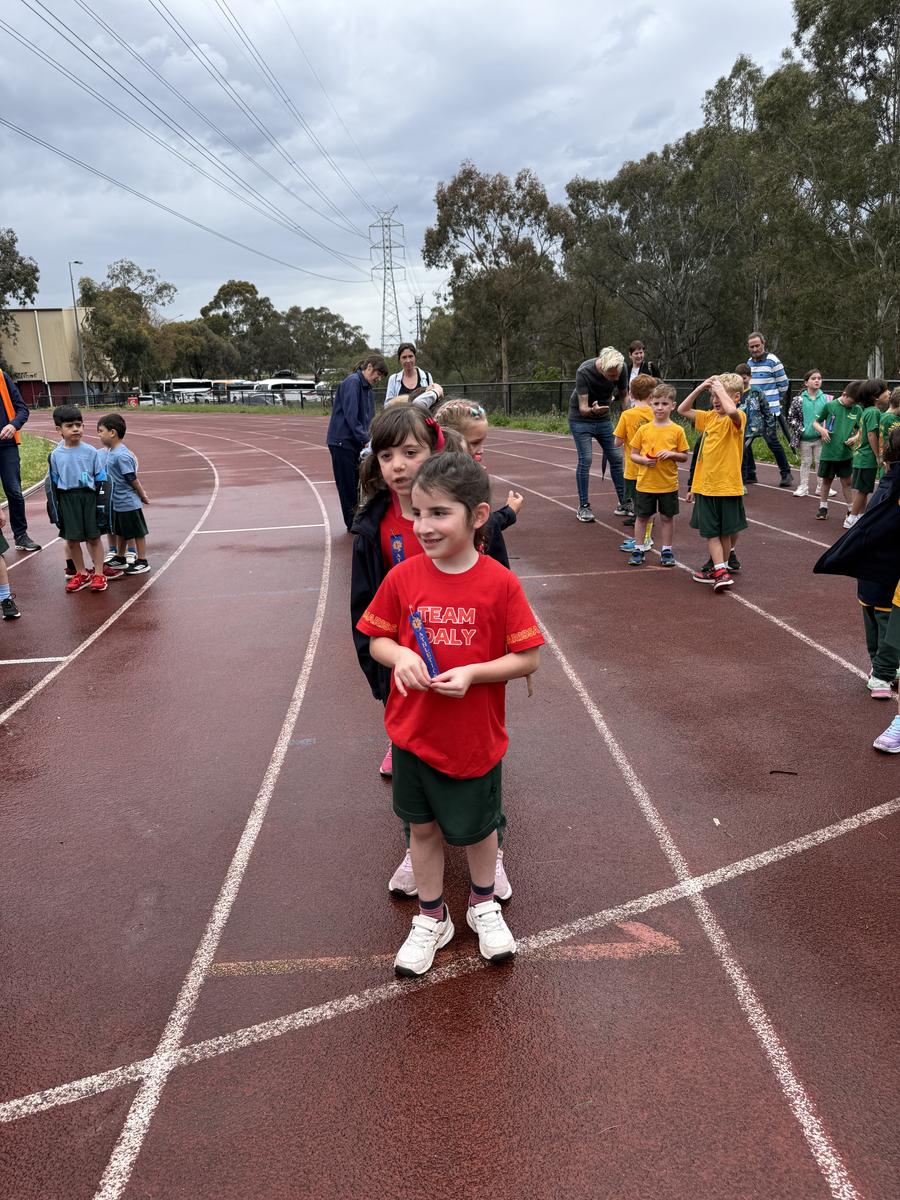
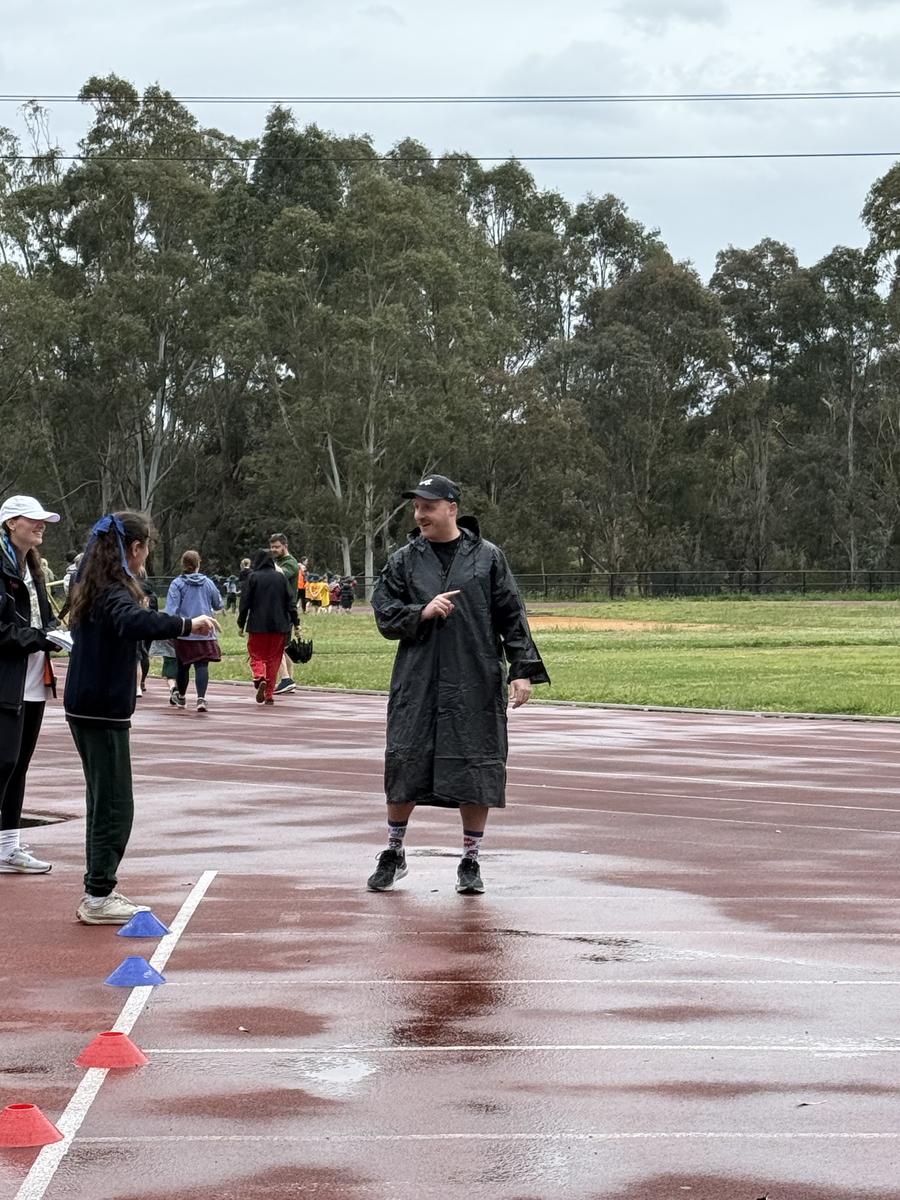
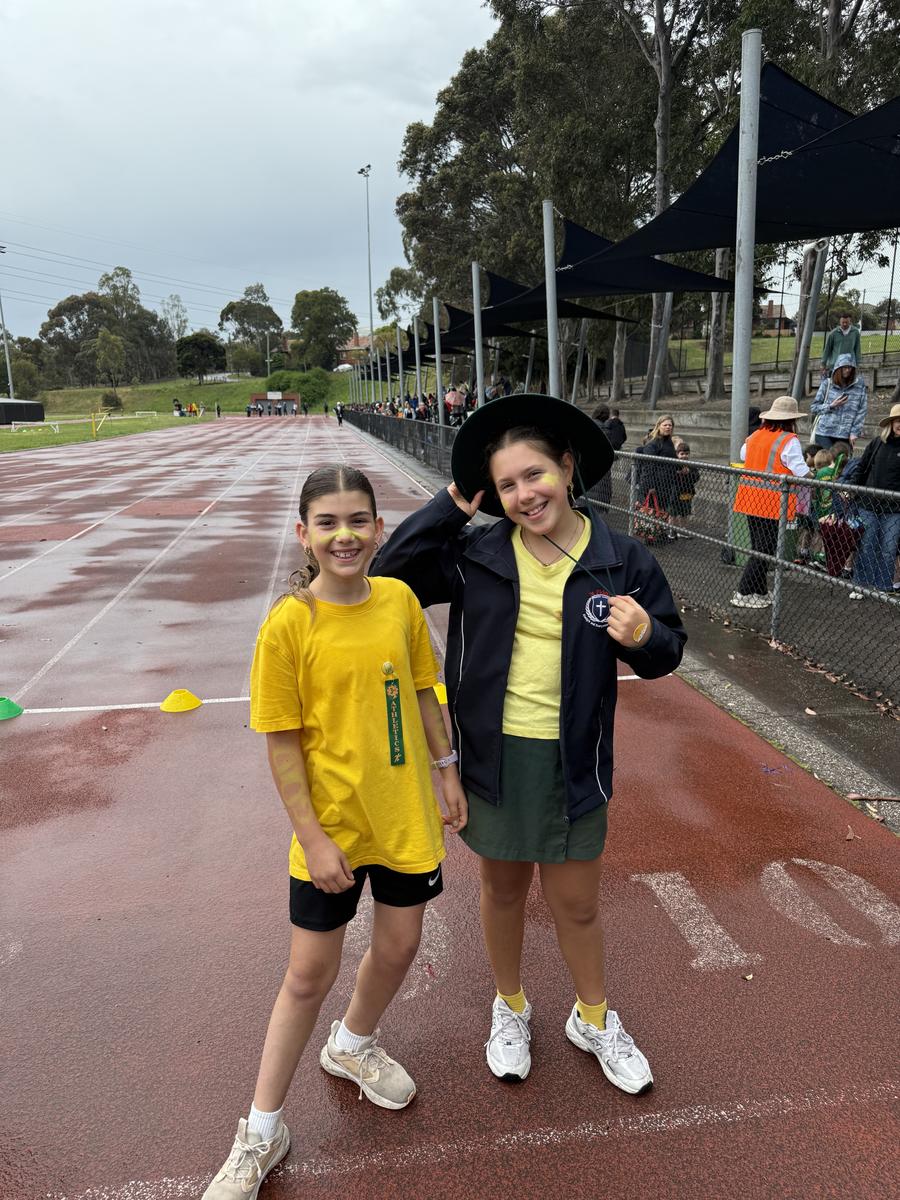
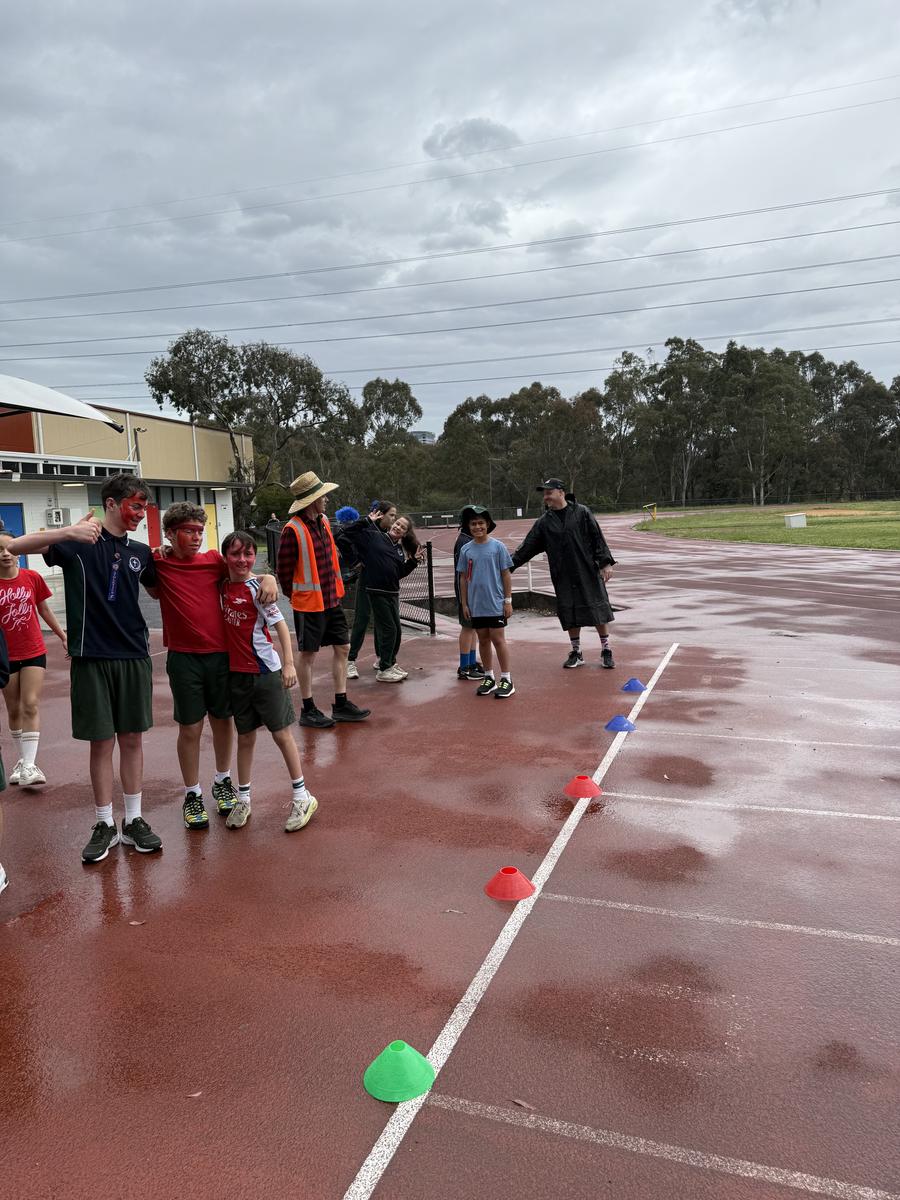

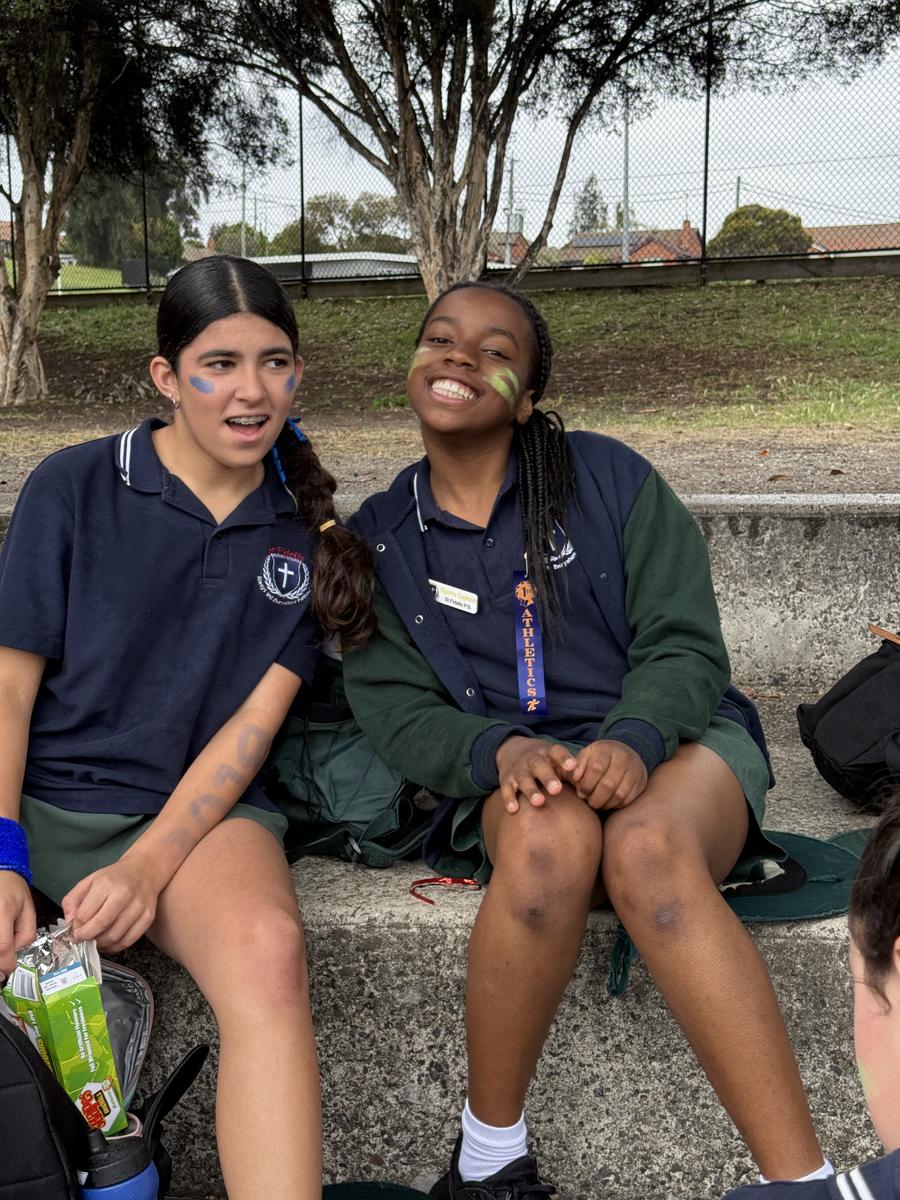
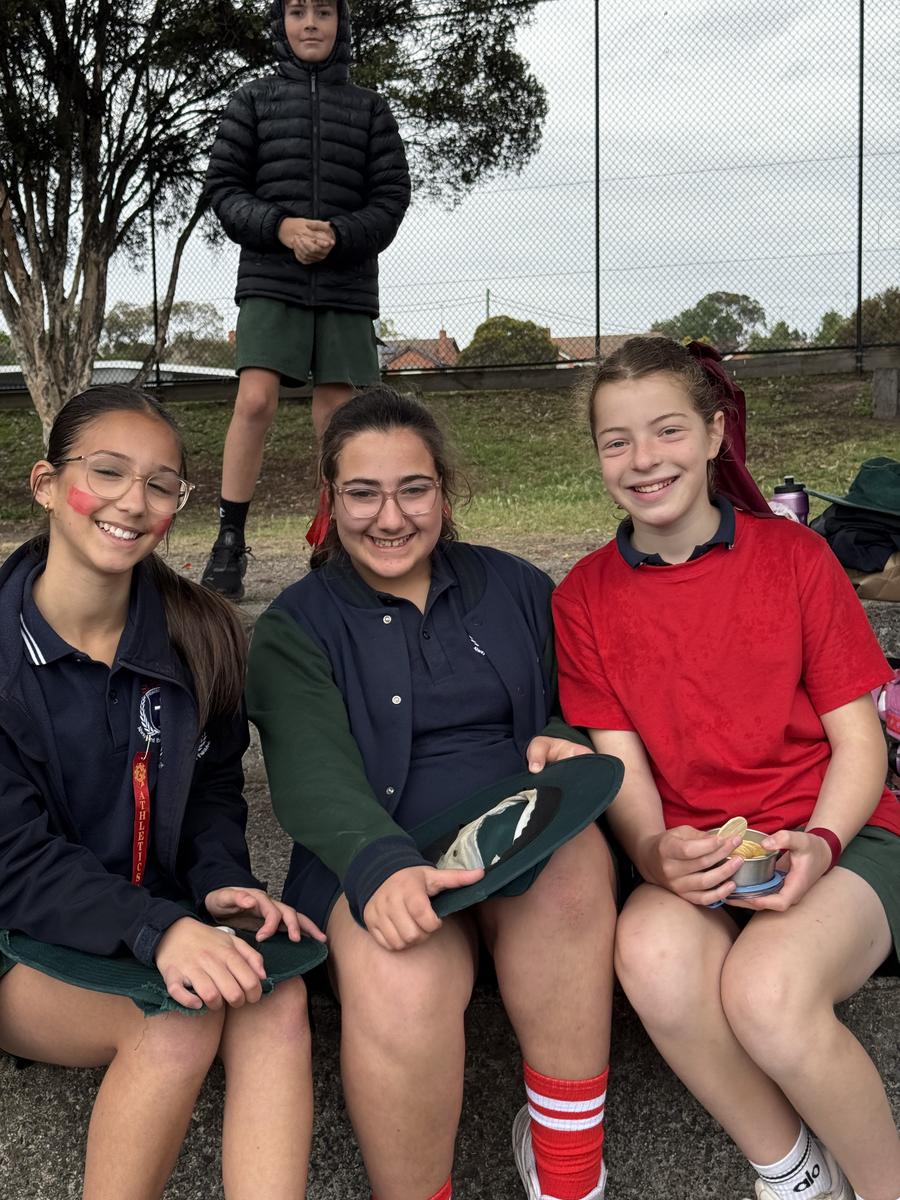
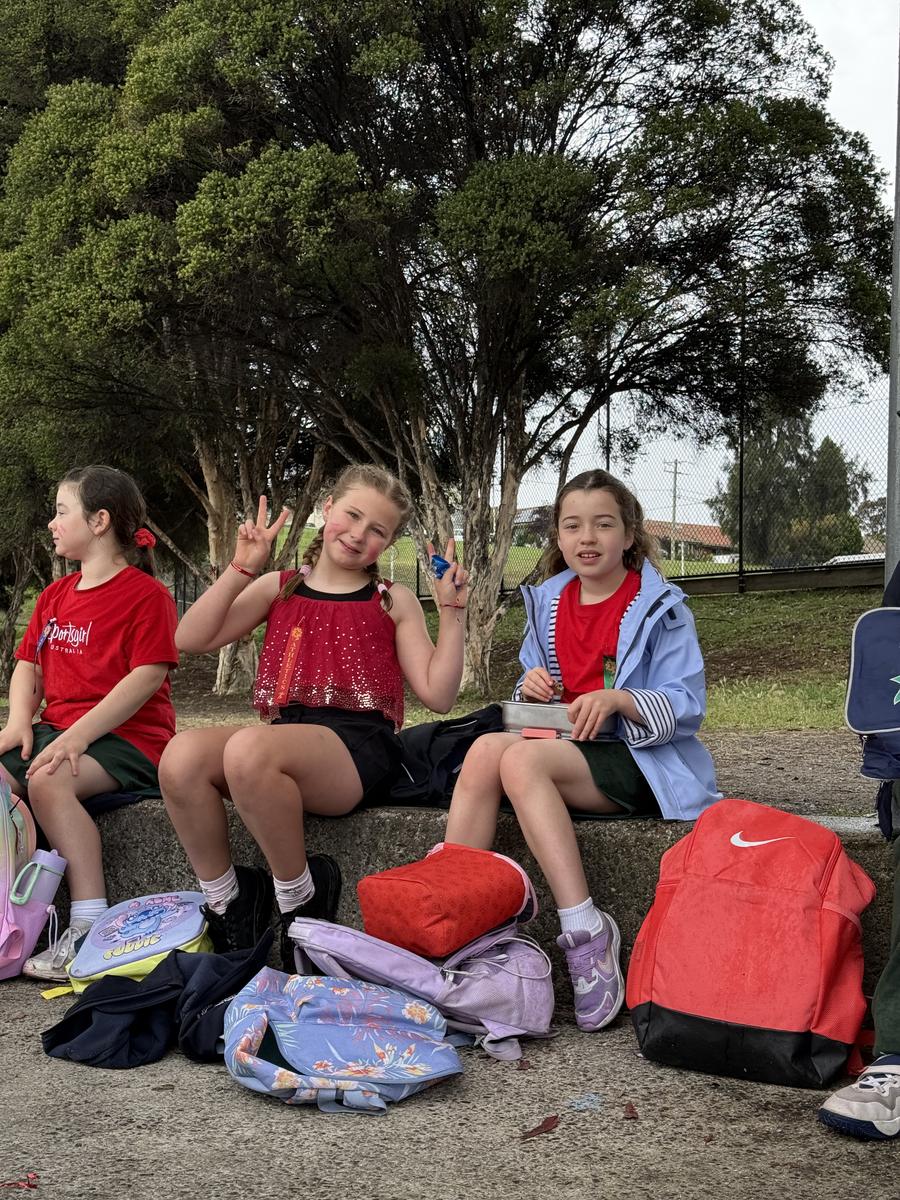
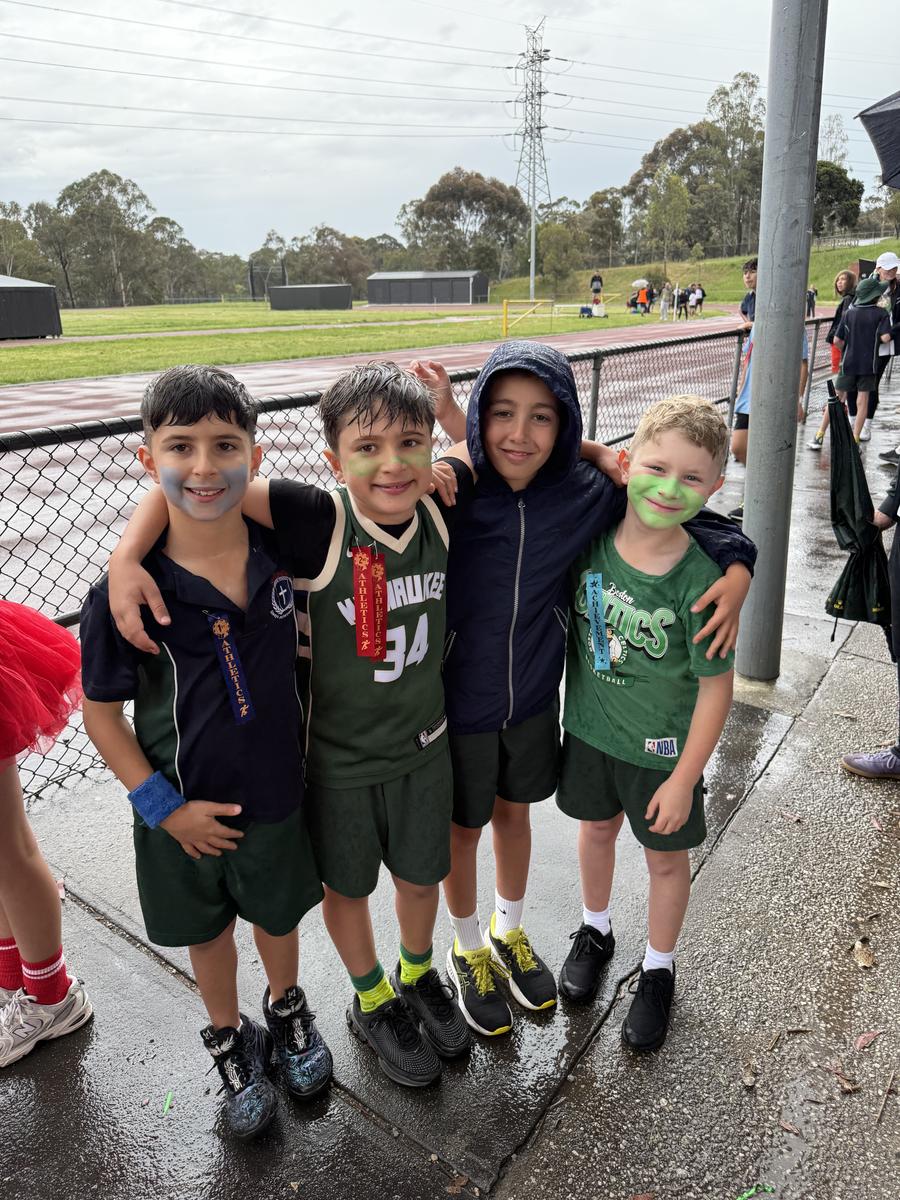
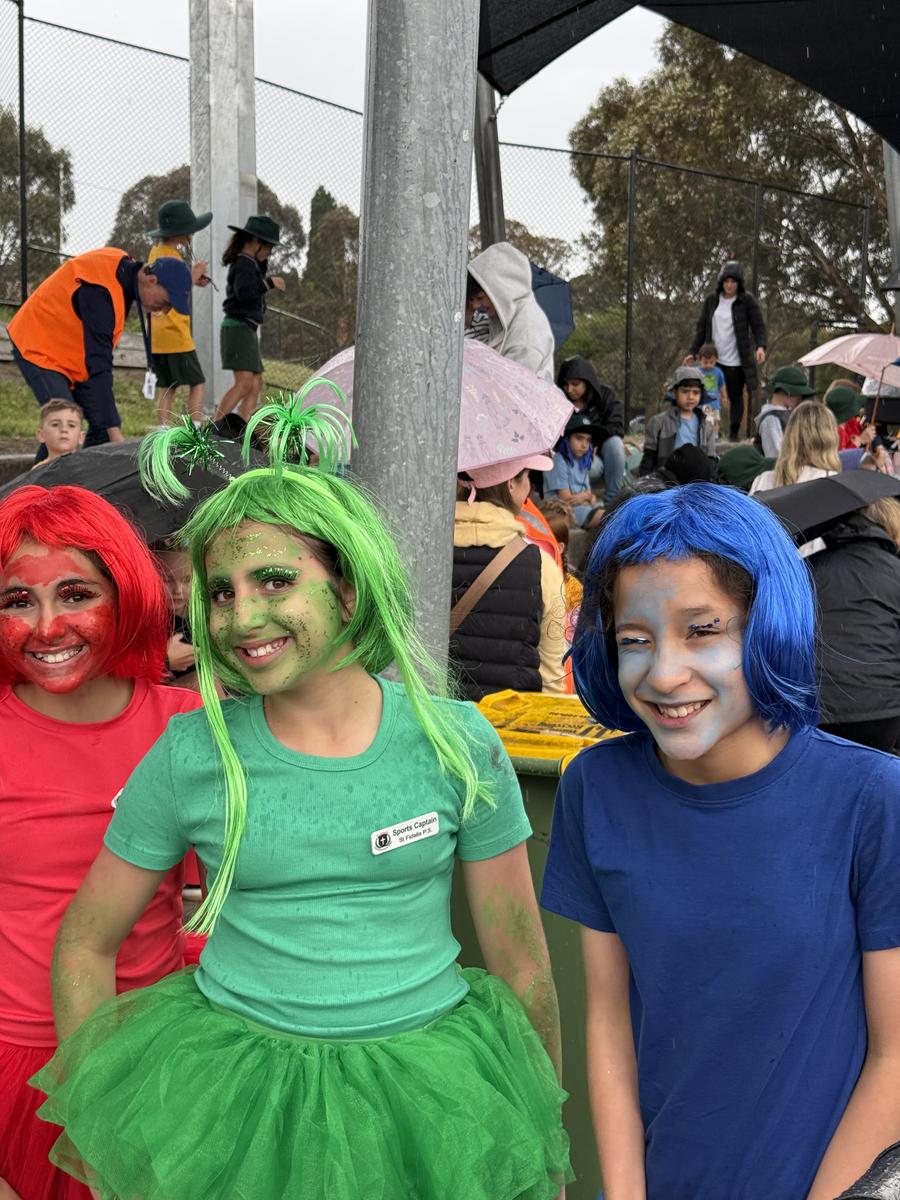
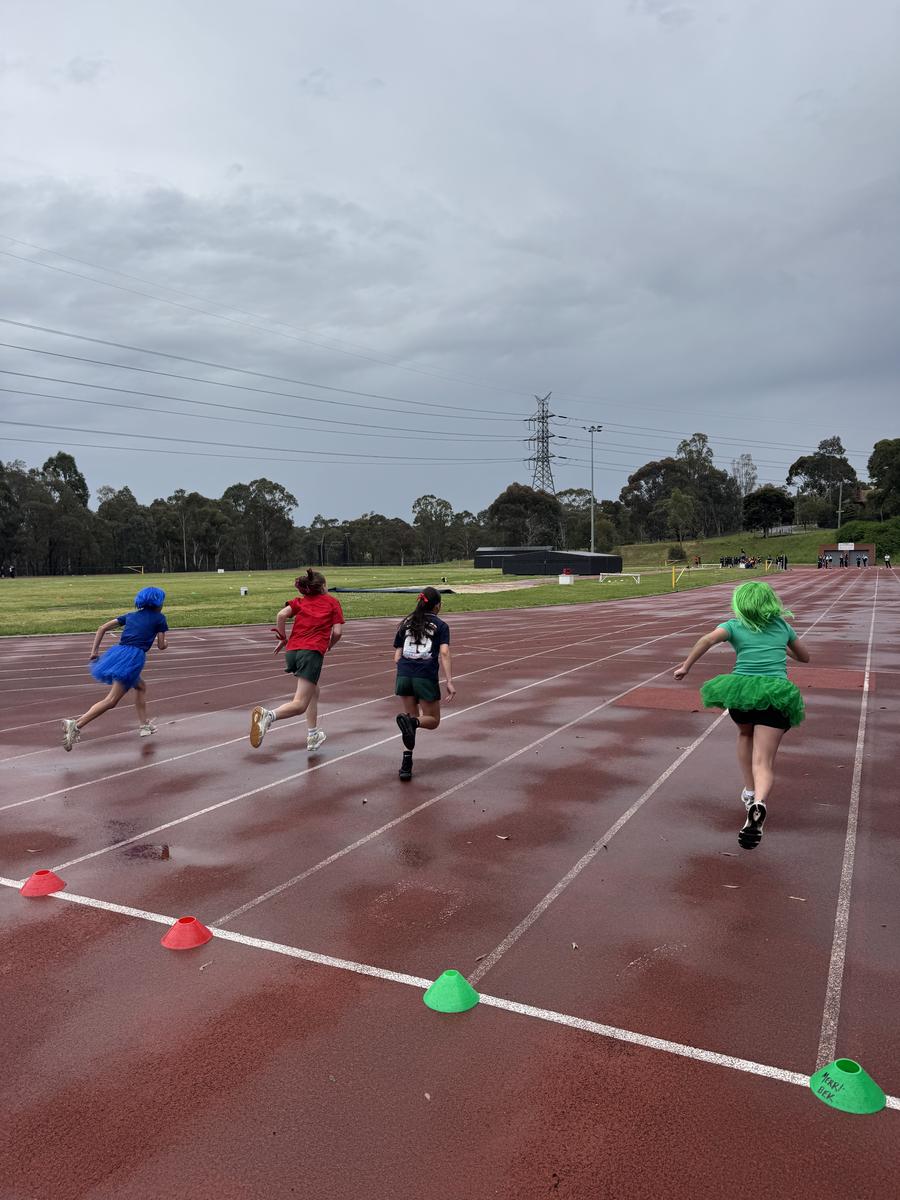
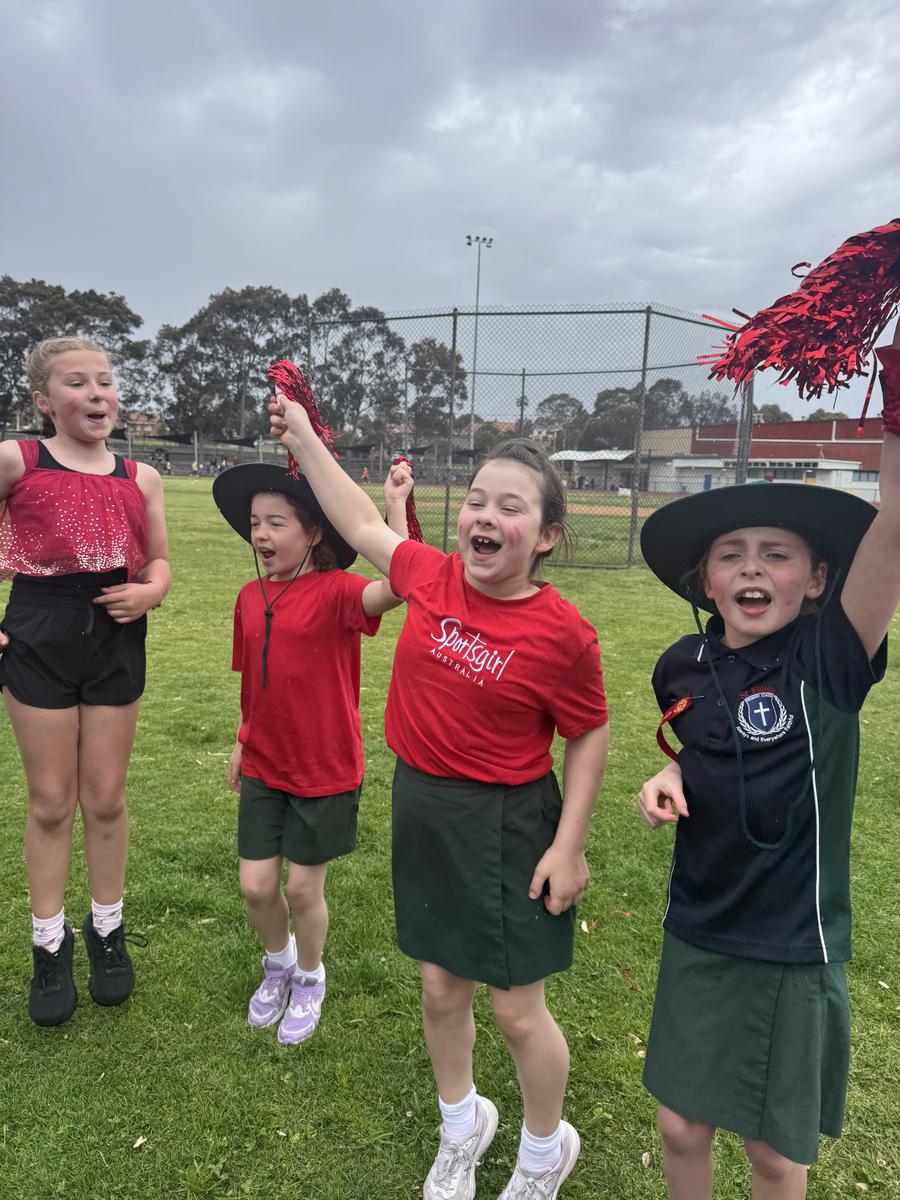
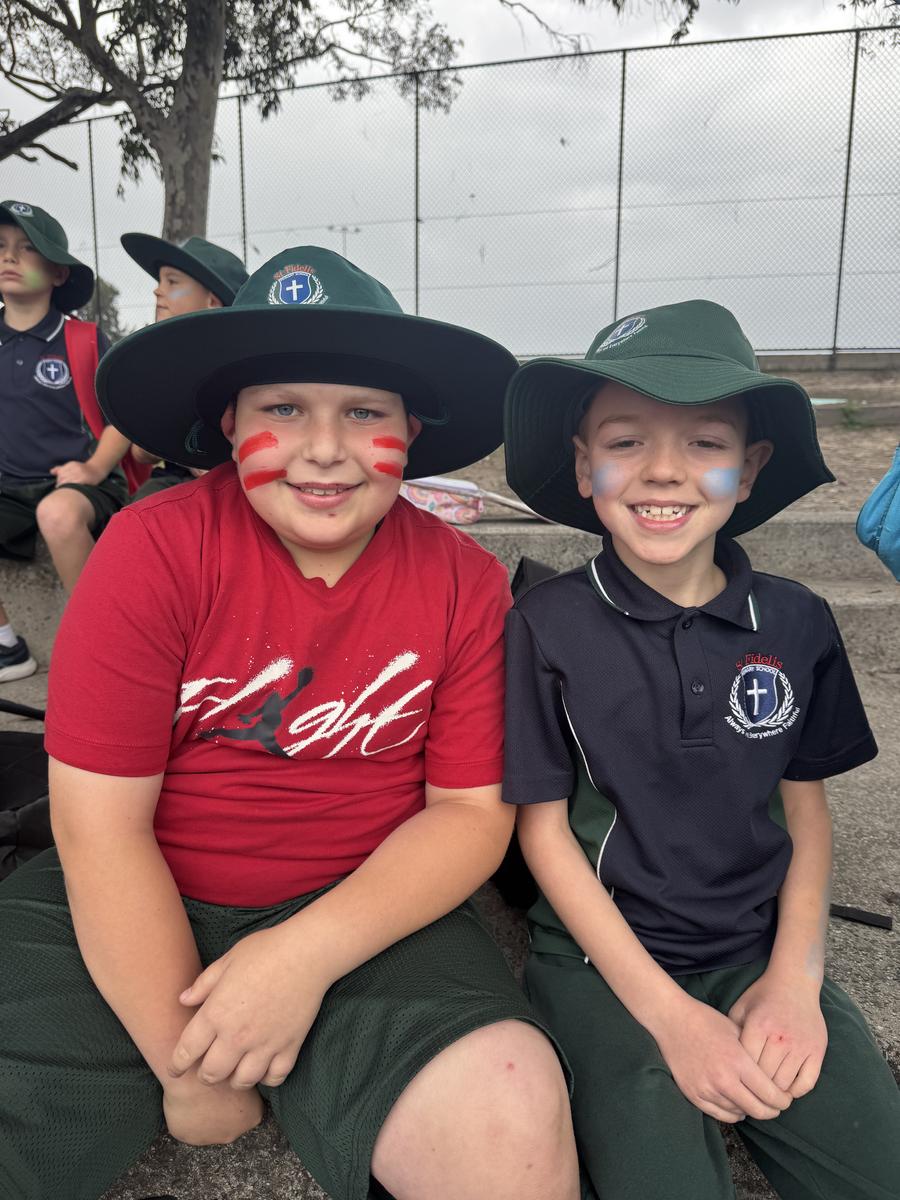





































During Terms 1 & 3, St Fidelis Primary School’s Girls Bat Tennis Team played bat tennis
matches to qualify as the representative Coburg District Team to compete at the Northern Metropolitan Region Tennis Hot Shots Tournament on Friday 7 November 2025 at Westmeadows Tennis Club, Willowbrook Reserve, Westmeadows.
Congratulations to the girls on their efforts on the day. Although they didn’t qualify for the
forthcoming State Tennis Hot Shots Championships, they should feel very proud of their
performances on the day. Well done, girls!
